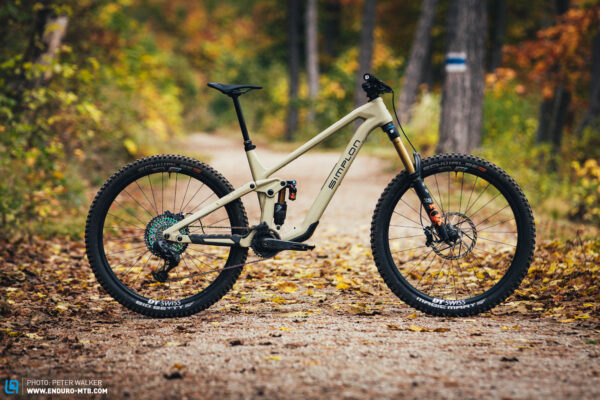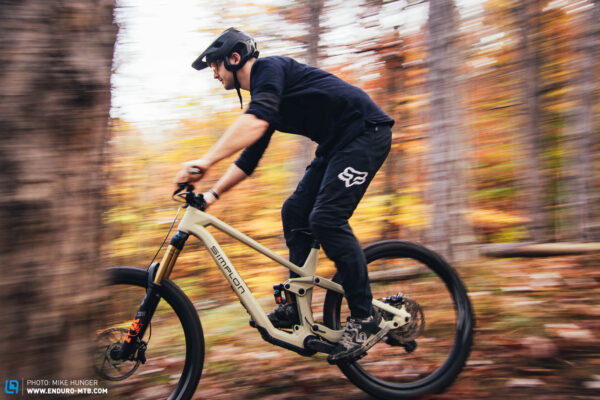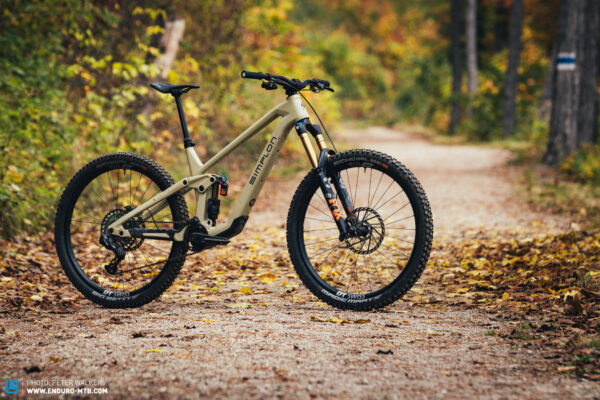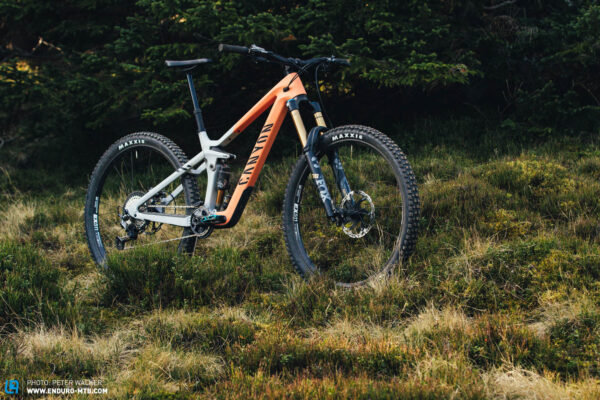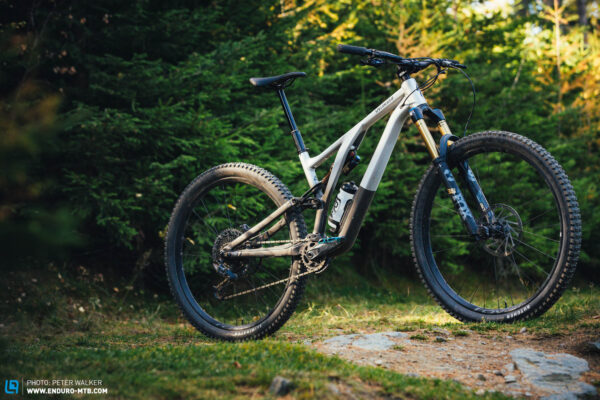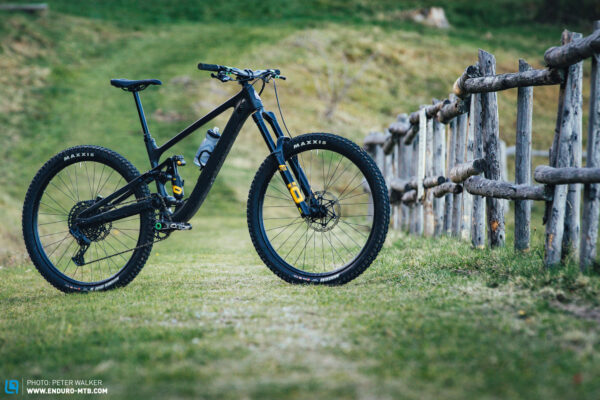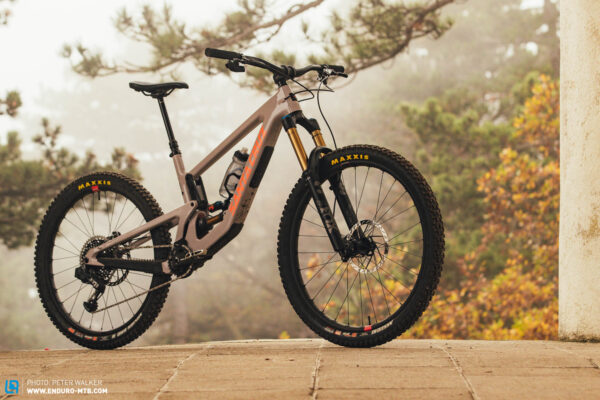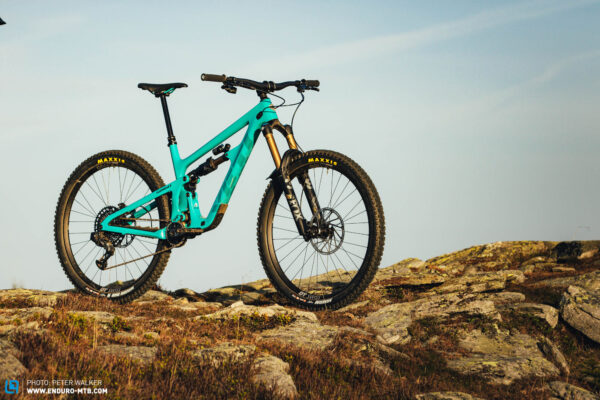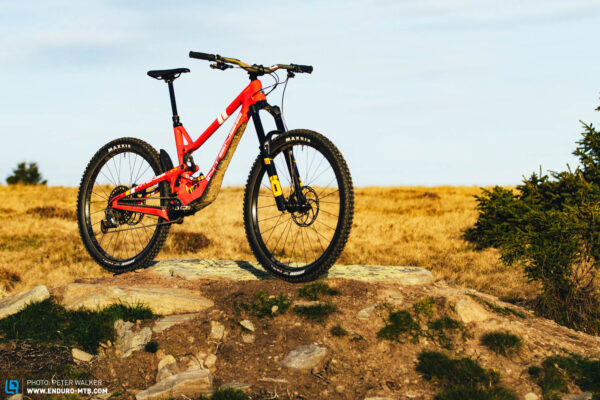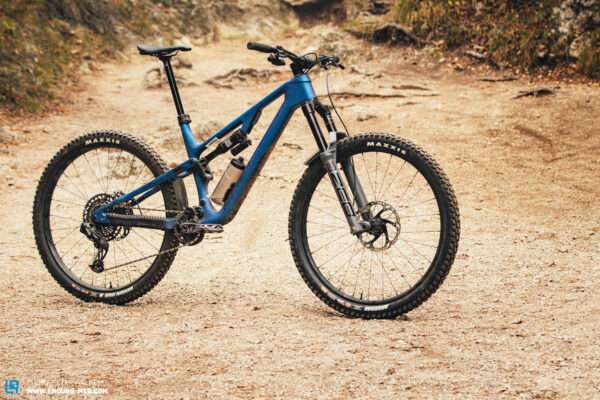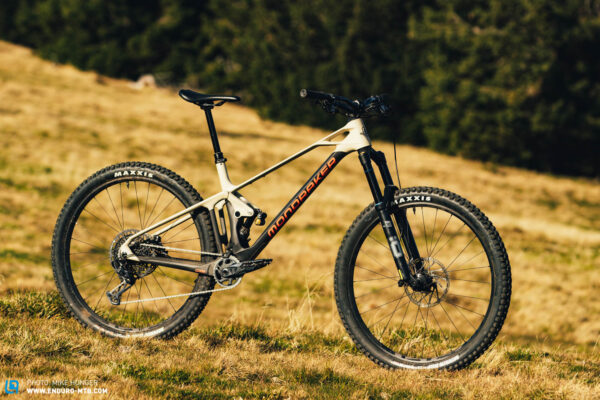The best enduro bike of 2023 – 14 of the hottest bikes of the season in our big 2023 enduro group test!
We pitted 14 of the most exciting enduro bikes of the year against each other in what we consider to be the most important and elaborate comparison test of the year. Our test field is excitingly diverse and includes everything from exotic stunners to hot newcomers, bold outsiders and old acquaintances, with prices ranging between € 6,299 and € 13,790. We packed our van and headed south, where we put the bikes through the wringer on dreamlike Alpine trails to answer the one question that keeps us all awake at night: which is the best enduro bike of 2023?
Table of content: What is in this test?
- What is an enduro bike and what should it be capable of?
- The test field
- Where and how did we test the bikes?
- The ENDURO test crew
- Our test criteria
- The tops and flops
- The best enduro bike of 2023
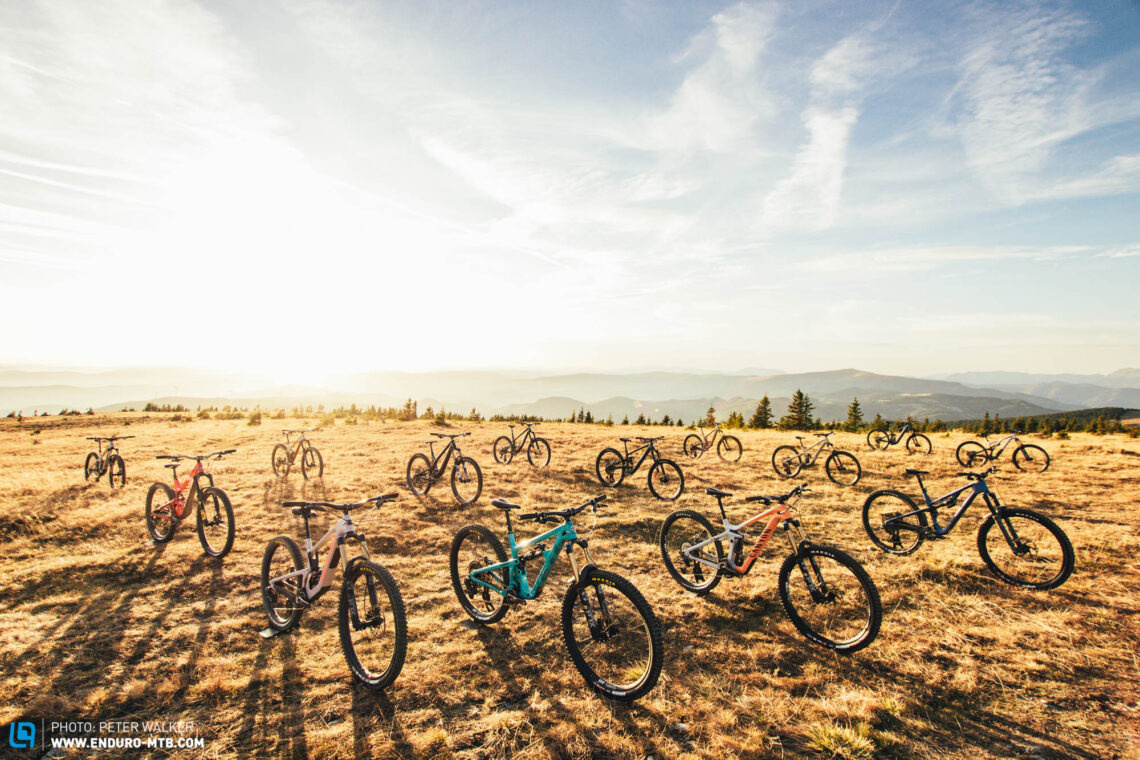
In stark contrast with the name of our magazine, this year’s enduro bike comparison test unfolded under the motto “Never go full Enduro!”. Alongside many exciting, brand new enduro bruisers, this year’s test field includes a few exotic stunners and a couple of outsiders which you wouldn’t necessarily expect to find here. But it’s now time to kick off the biggest, most influential and elaborate group test of the year, in which 14 competitors are fighting for the title of “Best enduro bike of 2023.”
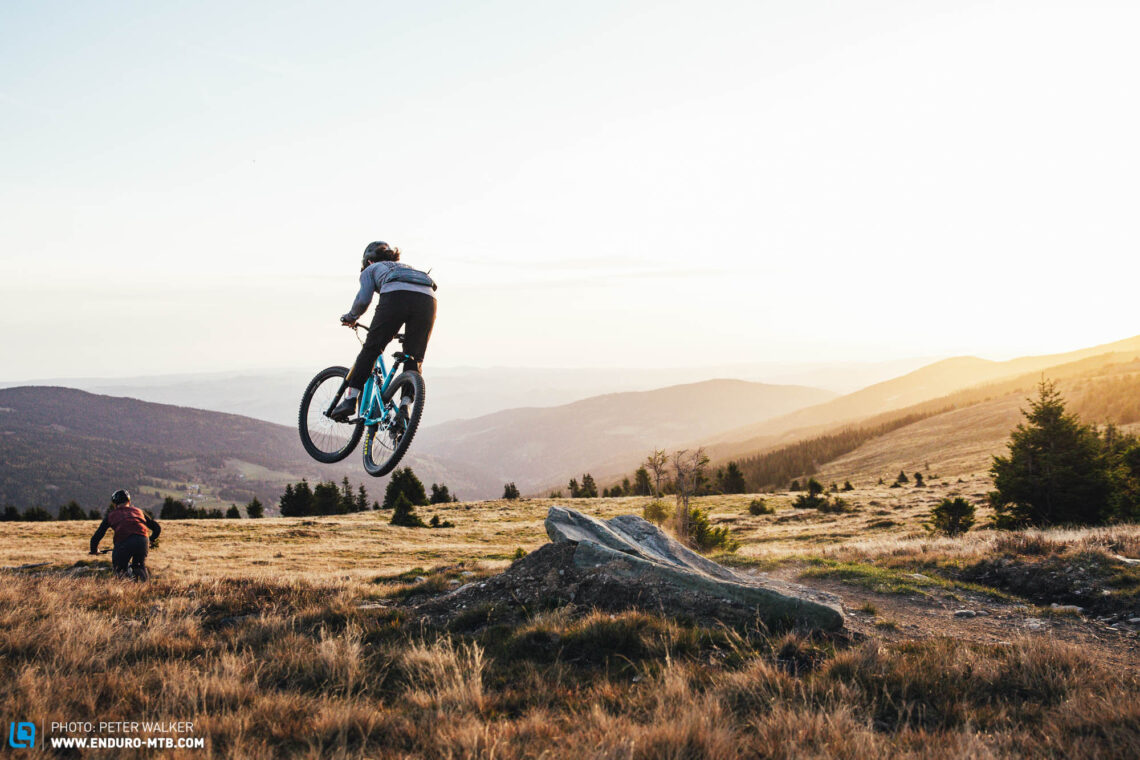
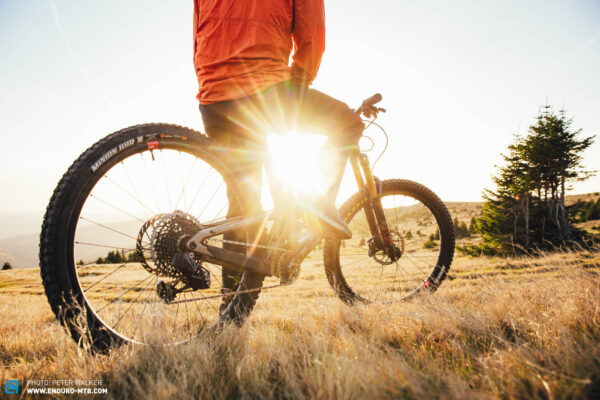
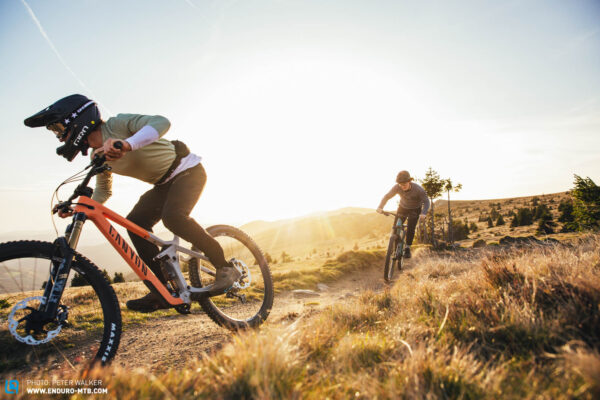
Our latest reader survey, in which almost 15,000 participants answered over 90 questions, proved that enduro bikes are alive and kicking. 61% of you already own one and, when asked what type of bike you’re thinking of getting next, a whopping 50% has committed to the enduro cause. Not only does enduro stand for the most popular gravity racing format but also for our tool of choice, trusted trail companion and feel-good machine. What a sun lounger is for many people, enduro bikes are for us – our favourite holiday passtime… and if you’re reading these words, you probably agree with us!

However, mountain biking is crazy expensive and has become even more expensive and exclusive over the past few years – read our Caviar and Kashima opinion piece to see what we think about the whole issue! Just to give you an example, our test field has a total retail value of € 133,151, with prices averaging an eye-watering € 9,511 – although our two sinfully expensive outsiders are partly responsible for this. That’s exactly why we want you to spend your money wisely and get a bike that really suits you!
If you don’t dare, you don’t win and if you don’t try new things, you don’t evolve.
While it’s true that we all share the same visceral love for mountain biking, it’s equally true that everyone has their own needs and preferences. “Home trail” is a broad concept: for some it’s a flowing trail in the Bavarian Prealps, for others a gnarly Double Black Diamond in British Columbia, a dusty hiking path in Provence or a sketchy rock trail scattered with cacti in Sedona. But even if all trails in the world were identical, every mountain biker would ride them in their own way. Simply put, riding style, climate and terrain are decisive factors in the choice of the right bike. As such, our aim isn’t to find out which bike is fastest, smoothest and most playful on a certain trail, but to determine which one suits your needs, preferences and riding style best. This requires a holistic evaluation based on varied perspectives rather than a rigid scoring system in which individual parameters are viewed and compared in isolation. Simply put, we test the bikes on the trail and not in a lab. After all, who rides their enduro bike on a test bench?
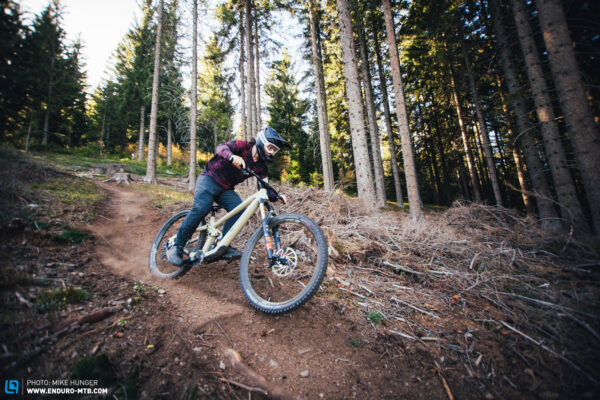
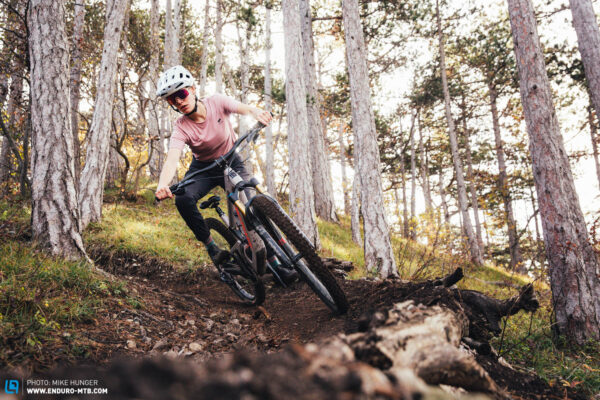
What is an enduro bike and what should it be capable of?
In a nutshell, there’s no such thing as a thoroughbred enduro bike. Standard bike categories have gradually blurred into oblivion and classic parameters such as travel, wheel size or geometry are no longer able to serve as a general guide to the intended use of a bike, let alone its character. As demonstrated in our big mountain bike group test with over 20 bikes, which includes anything from lanky downcountry rigs to burly enduro bruisers, limited travel and a steep seat tube angle aren’t necessarily synonymous with climbing efficiency while a super-slack head angle and shed-loads of travel alone don’t make you the downhill king. Instead, it’s far more important to blend individual handling characteristics into a coherent overall package to suit the intended application. Unfortunately, some manufacturers still have a lot of work to do in this respect!
In this group test, we were looking for the perfect all-rounder, a versatile enduro bike that can deliver top riding fun in all situations, from fast and rough trails to narrow and steep technical ones. Whether you’re on an epic expedition in the Alps or cruising down your home trail after a hard day’s work, spending the weekend in Finale or chasing your mates down A-Line, the best enduro bike of 2023 must be capable of getting your endorphins flowing while handling the most demanding trails in the world! We left our stopwatch at the office and focused on the allround qualities and fun factor of the bikes, intentionally swapping fast times for good times!
The test field: which enduro bikes did we test?
Putting together a consistent test field is a huge challenge and requires us to weigh up countless factors. Not only does it have to be relevant to you, our readers, but also satisfy our inherent need to look beyond the horizon while at the same time taking into account the hottest current trends and most exotic specimens – a very fine balance that’s hard to achieve! Nevertheless, we’re always up for a challenge, so we spent sleepless nights racking our brains to understand which bikes shouldn’t be missing and which ones could help us broaden our perspective. On this basis, we’ve put together an exciting, relevant test field, which includes not only a deserving test winner but also several alternatives that will make the ideal companion for most enduro riders. And what about all the other great bikes out there we didn’t include in this test? Well, even as one of the leading magazines in our sector, we aren’t immune to the current bottlenecks in the supply chain. As a result, we weren’t able to include several exciting new bikes from brands like CUBE, Transition and GIANT, who weren’t able to supply us with a test bike on time. Find an overview of the 14 bikes below.
| Bike | Price | Wheel size | Travel f/r |
|---|---|---|---|
| Canyon Strive CFR 8 (Click for review) |
€ 6,299 | 29″ | 170/160 mm |
| Deviate Claymore (Click for review) |
€ 9,000 | 29″ | 170/165 mm |
| Hope HB916 (Click for review) |
€ 8,400 | 29″ | 170/160 mm |
| Intense Tracer 279 S (Click for review) |
€ 6,999 | 29″/27.5″ | 170/170 mm |
| MERIDA ONE-SIXTY 8000 (Click for review) |
€ 8,999 | 29″ | 170/162 mm |
| Mondraker Carbon Foxy RR (Click for review) |
€ 7,299 | 29″ | 160/150 mm |
| Norco Range C1 (Click for review) |
€ 9,999 | 29″ | 170/170 mm |
| Santa Cruz Megatower X01 AXS RSV (Click for review) |
€ 11,799 | 29″ | 170/165 mm |
| Santa Cruz Nomad X01 AXS RSV (Click for review) |
€ 11,799 | 29″/27.5″ | 170/170 mm |
| SIMPLON Rapcon 170/165 (Click for review) |
€ 7,479 | 29″ | 170/165 mm |
| SIMPLON Rapcon Pmax TQ 170/165 (Click for review) |
€ 12,999 | 29″ | 170/165 mm |
| Specialized Stumpjumper EVO Elite Alloy (Click for review) |
€ 6,300 | 29″ | 160/150 mm |
| Yeti 160E T1 (Click for review) |
€ 13,790 | 29″ | 170/160 mm |
| Yeti SB160 T3 (Click for review) |
€ 11,990 | 29″ | 170/160 mm |
Exciting! With this test field, we wanted to showcase different types of enduro bikes with all sorts of rear suspension designs, including exotic high pivot bruisers, while at the same time answering the million-dollar question – mullet or 29” wheels? – and covering different price points. Moreover, our 2023 enduro group test includes two very different eMTBs, showing once again that they’re perfectly capable of keeping up with an analogue test field despite their motor and heavier weight.
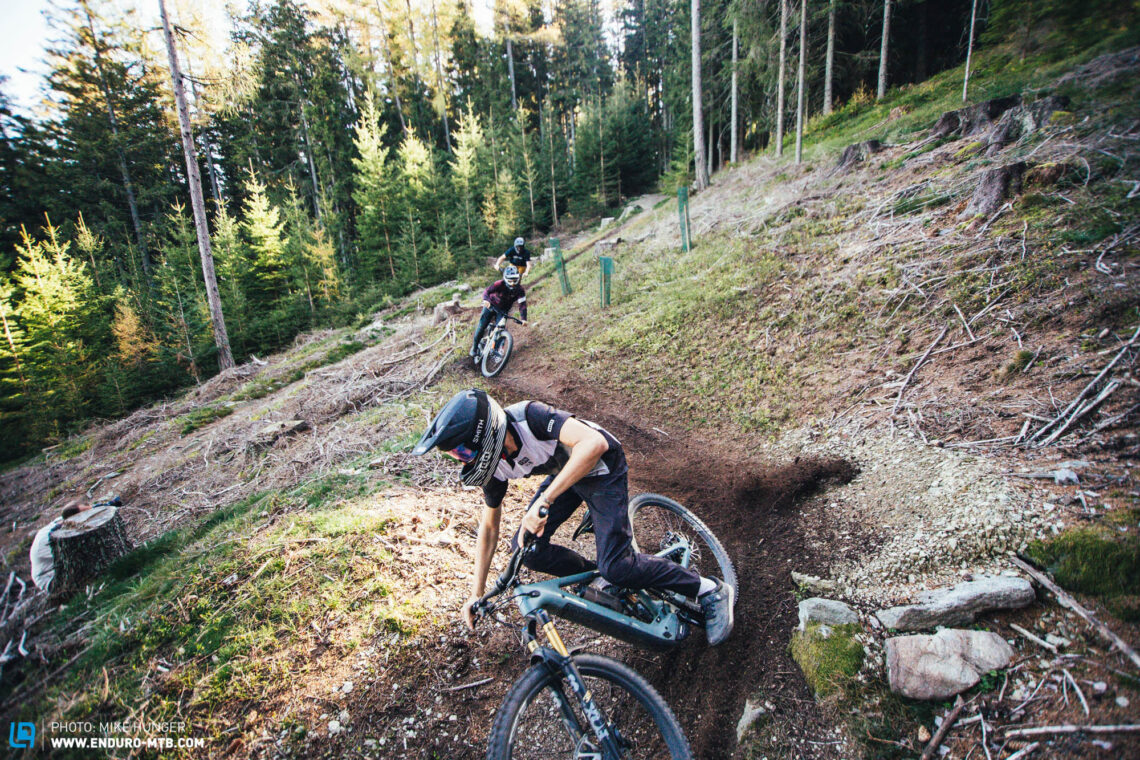
While testing the bikes, we quickly realised that the performance of enduro bikes hasn’t yet reached its peak and that development is advancing at breakneck speed. As the defending champion, the SIMPLON Rapcon 170/165 couldn’t miss our 2023 group test and, even though it’s still an excellent bike, wasn’t able to secure victory for the second year running. This year, however, the reigning champion brought along its electric sibling, the Rapcon PMAX TQ 170/165. SIMPLON’s Light-eMTB comes equipped with a 50 Nm TQ motor and relies on the same frame platform as its analogue brother, which only weighs 4.3 kg less, thus entering the race with very promising prerequisites. Cult brand Yeti joined the party with another winning bike, the full-fat 160E T1 eMTB, which secured victory in the “Best eMTB of 2022” comparison test of our sister magazine E-MOUNTAINBIKE and is the most expensive competitor in this test, retailing at an eye-watering € 13,790.
The new Canyon Strive CFR, which was only introduced last spring, costs less than half that and is the cheapest bike in the entire test field alongside the Specialized Stumpjumper EVO Elite Alloy. The latter is also the only candidate with an alloy frame and turns the tables on Specialized, which is usually amongst the most expensive brands in our group tests. Two high-pivot rigs from England and Scotland add a touch of exotic flair to this 2023 group test. The Hope HB916 employs many of the manufacturer’s in-house components and combines a simple design with beautifully machined parts, while the Deviate Claymore cuts a great figure with its custom spec and rider-friendly features.
The third high pivot bike in this test, the Norco Range C1, takes on its opponents with a beefy and rather intimidating look. Santa Cruz, one of the most popular brands in our reader survey, joins the party with a double whopper, entering the race with the Megatower CC X01 AXS RSV and Nomad CC X01 AXS RSV, which were both launched this year. The two Santas make for some very exciting insights and interesting comparisons, sharing near-identical specs and geometry despite being destined for completely different areas of application.
Another new and similarly expensive bike is the Yeti SB160 T3, which plays a key role in this test. Intense’s mullet ripper, the Tracer 279 S, on the other hand, is much cheaper than expected. For the 2023 season, the American brand has reviewed its pricing strategy, giving the new Tracer a great set of features and a very fair price. Far more discreet and understated is the new MERIDA ONE-SIXTY 8000, which rolls into the new season with a well-thought-out geometry concept and tons of clever details. Last but not least, the Mondraker Carbon Foxy RR rolls into the ring with the Spanish brand’s Fast Forward geometry concept and a very respectable 14.6 kg, which makes it the lightest contestant in the entire test field.
We deliberately decided not to include bikes like the Specialized Enduro, Trek Slash, COMMENCAL META and Propain Tyee in this test, because they’ve all competed in at least one of our previous tests and haven’t been updated since.
The big price question – why are some enduro bikes so expensive?
Since the aim of this group test is to find the best enduro bike of the year, many manufacturers didn’t think twice about entering their top spec models into the race. Other brands opted for less expensive models, either due to a lack of availability or because they just followed our advice – remember, expensive doesn’t always mean better! Of course, some manufacturers don’t even offer their bikes in high-spec variants with the most expensive drivetrains, brakes and wheels available on the market. Nevertheless, the average price of analogue bikes in this year’s enduro group test is € 8,863, which is around € 600 more than last year.
However, according to our latest reader’s survey, you’re planning to spend an average of € 5,047 on your next bike, which is a good € 500 more than last year, making the average bike in this test a smidge too expensive for the average reader. Enduro newbies without an MTB or road bike background who are completely new to cycling are especially likely to be put off by the sometimes-exorbitant prices. But where do the high prices come from and does the price tag reflect the performance of the bike?
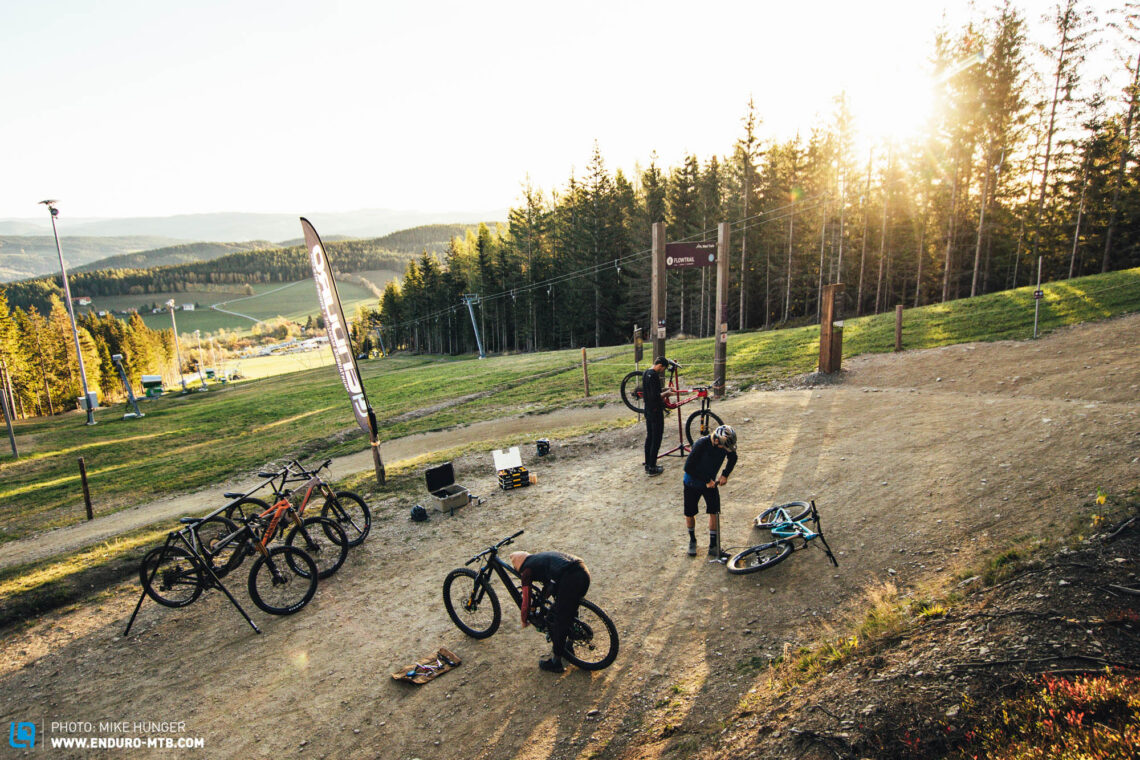
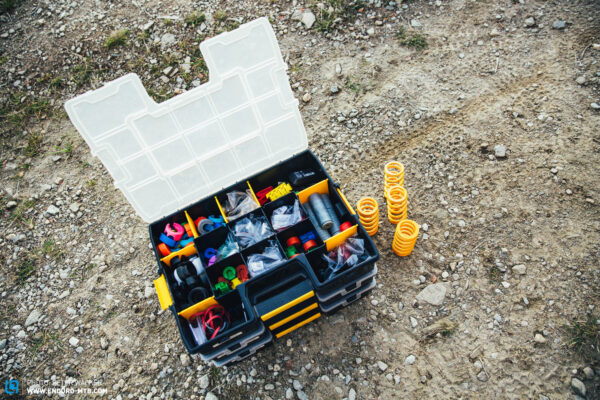
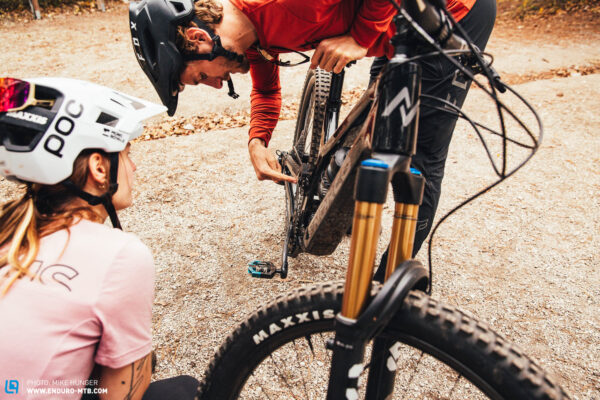
We say no! While the key determinants of price increase, like for example the current inflation and bottlenecks in the supply chain we’ve experienced over the past couple of years, affect all manufacturers in the same way, the extent to which some brands have marked up their high-end models is truly jaw dropping. Can a bike have three times the utility value of others? We could sit here and discuss for another ten years! If the Yeti SB160 helps you win EWS stages, then it must be true. However, for most riders, it’s probably not.
The good news is that there’s a cheaper equivalent to almost every expensive bike in this group test. Our findings article for this test might allow you to draw conclusions about the handling of cheaper models too, at least to some extent, because the geometry remains the same regardless of the price point. However, some manufacturers spec cheaper suspension components on lower-end models, which has a huge impact on the performance and character of the bike. That being said, some brands prefer to be consistent, speccing high-quality suspension across the entire range and saving their money on other components, for example using heavier brakes and drivetrains, thus ensuring a comparable performance on the trail – Canyon do just that with the Strive.
But how much do you have to fork out for a decent bike? Sorry, as much as we’d love to, we can’t give you an exact sum. Unfortunately, it’s not quite as straightforward, because every rider has different demands and requirements. But one thing’s for certain: you don’t necessarily have to spend the € 8,863 average price of this test field to secure a decent bike. In our detailed enduro guide for beginners and experts, we’ll tell you exactly how much you have to factor in to get started on your enduro journey, while our personalised ENDURO buyer’s guide gives you countless tips to help you find out more about you and your needs.
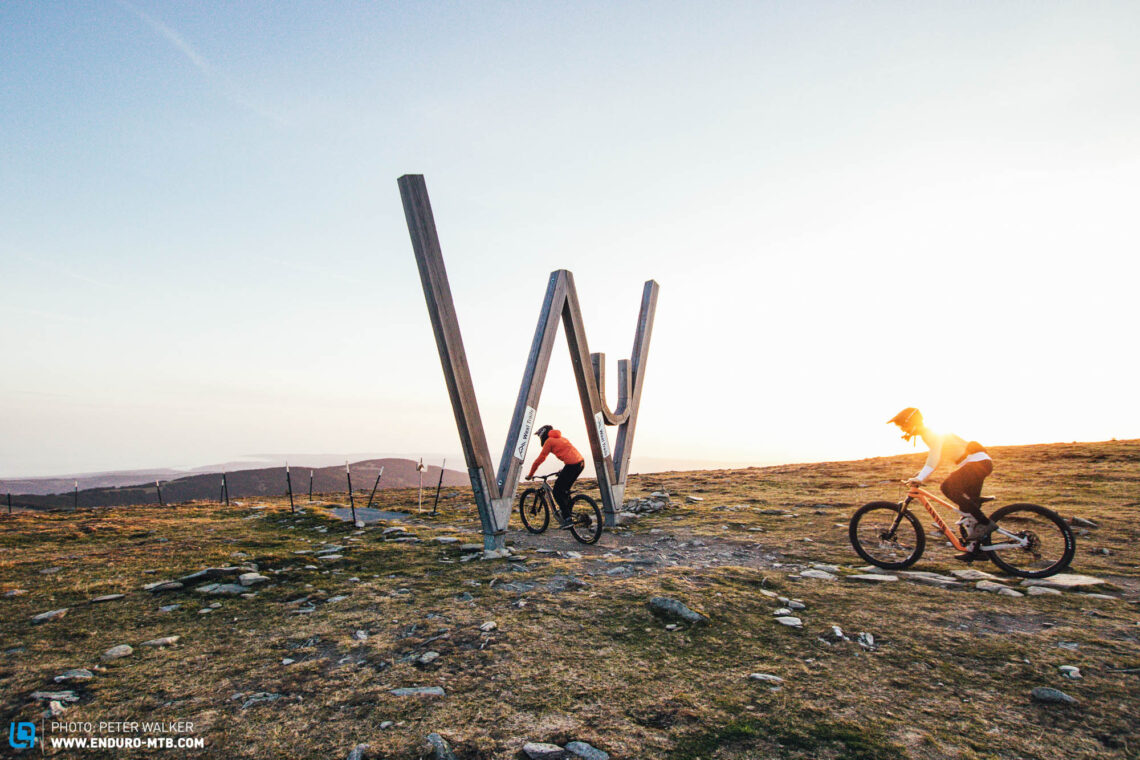
Where and how did we test the bikes?
One location that’s still relatively unknown is Bikepark Wexl, near Vienna, which opened its doors only a few years ago and, thanks to its location, is open to the public far into the autumn. The trails follow an intuitive loop system and uplifts are done with a T-bar lift, which will quickly change the minds of all drag-lift haters: unless you’re riding a crazy spacer configuration on your cockpit, the bar hooks on and off directly on the stem, making the uplift a safe and easy procedure and allowing you to check your mobile phone, enjoy the view or simply have a rest on your way to the trailhead. In addition, the trails are rather short, so you should be able to squeeze in between 15 and 20 laps per day.
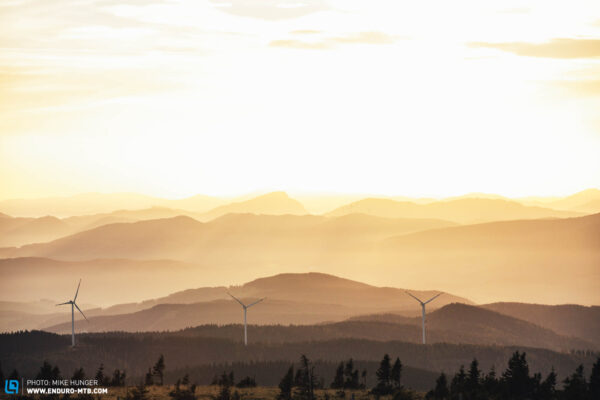
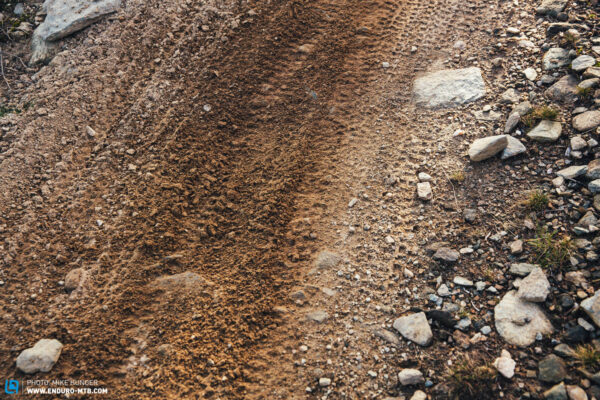

Bike park Wexl has a lot to offer, from simple yet super-fun flow trails with berms and rollers to technical singletracks and fast downhill tracks. Particularly worth mentioning is the big jump line, which was built with safety and variety in mind to help you increase your skill and dopamine levels without ever getting bored – and that’s coming from someone who’s spent over 150 days in Whistler. Another trail highlight is the Hochwechsel tour, which combines the finest views and a long descent. If you feel strong, a short climb from the lift will take you to even more fun trails.
The lovely people at Bikepark Wexl also have you covered with food and drinks, and in the car park you’re allowed to camp for free and use the Wi-Fi. Of course, there is also a bike wash station, a shop with bike rental, and if you’re impatient to hit the trails you can buy your tickets online and print them out on site using your QR code. Long story short: Wexl is definitely worth a visit!
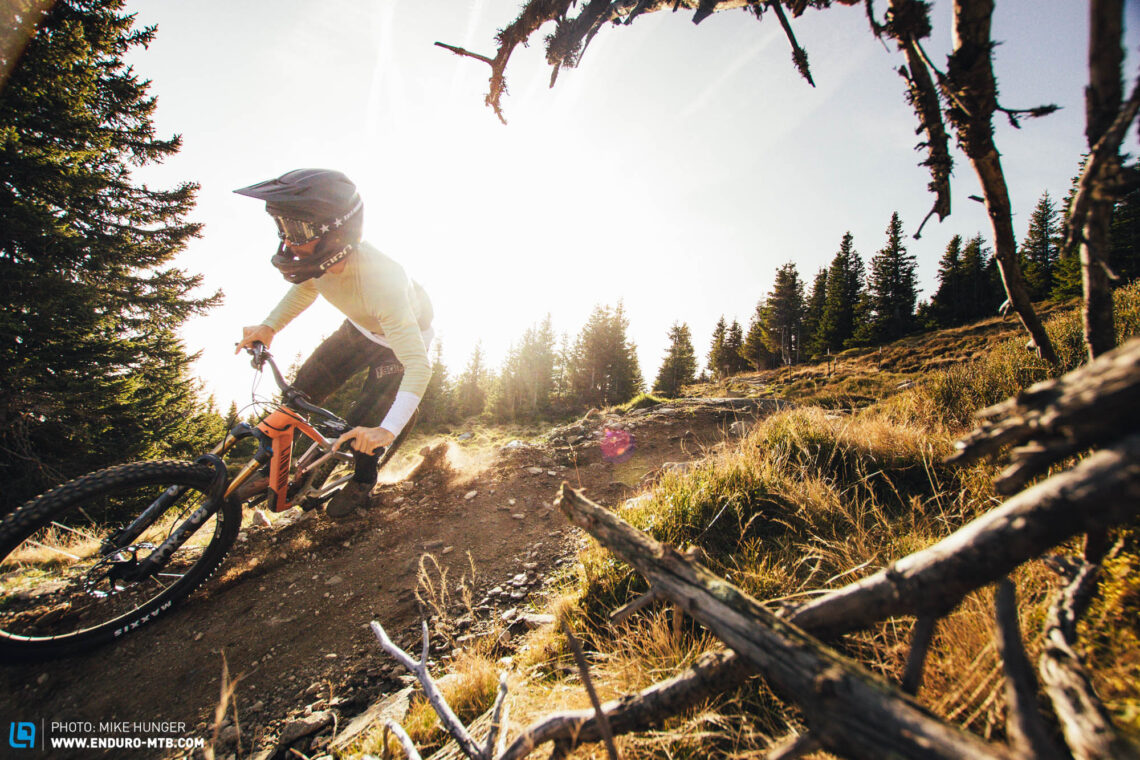
The ENDURO test crew
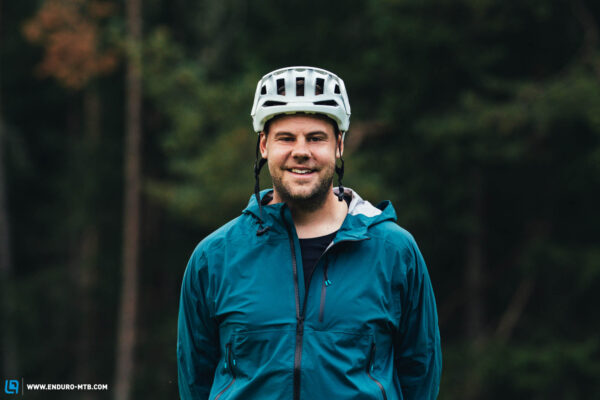
I still remember the days when we had to push our heavy mountain bikes without dropper posts and 12-speed drivetrains up the hill, only to enjoy a very short descent on our way back into the valley. I’ve witnessed the development of enduro bikes since day one and I can’t see it stopping any time soon. When it comes to choosing an enduro bike, balanced handling, versatile suspension and high build quality have become crucial criteria for me.
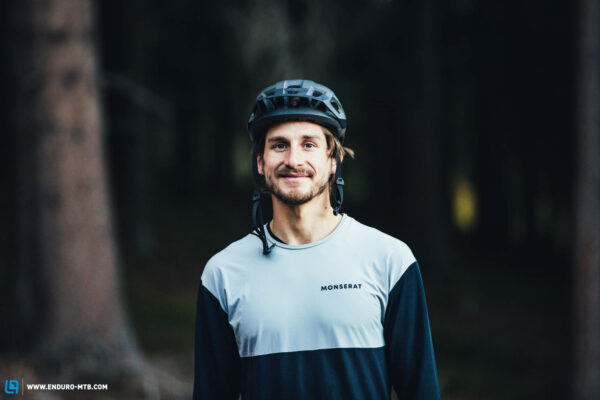
My life is a harmonious compromise between a healthy diet, good work-life balance and lots of sport. Compromise is also key when choosing my bike, which must provide the right mix of agility, composure, traction and support while at the same time offering a solid spec at a fair price. Fortunately, this is still possible, meaning that I get my money’s worth out of cycling.

When I’m not working or topping up the oil on my Defender, I like to push the suspension and wheels of my bike to the limit. As a result, my ideal enduro bike must combine a robust spec and defined suspension, and deliver sufficient propulsion uphill, because time is money – especially if you grew up in Swabia.
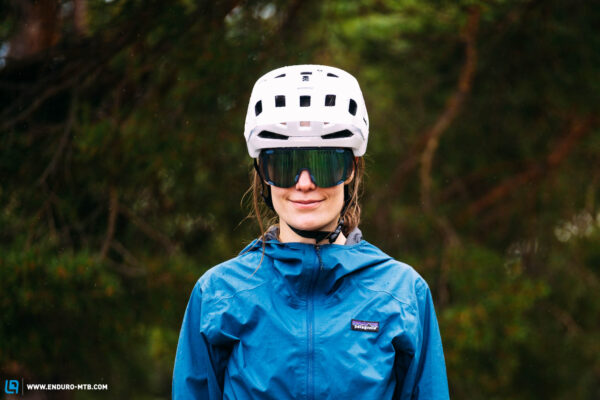
What do I like most about riding? When the boys drop into the trail before me and instantly regret their decision. When I’m not busy with my uni stuff, I spend every spare minute in the mountains. I’ve been riding between the tapes for over 20 years, so racing has been part of my life since I was little – and that’s not going to change any time soon!
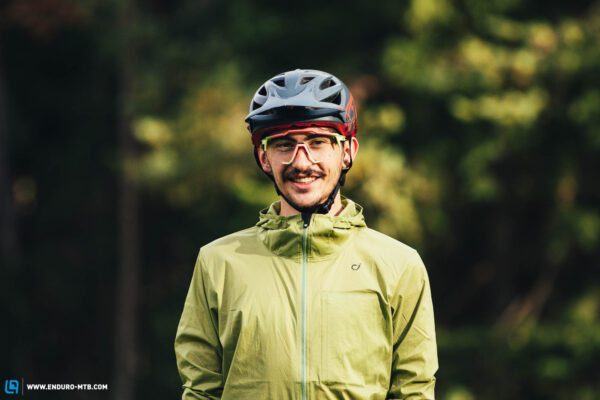
Before joining the ENDURO team, I’ve worked in a bike shop for years, so I recognise a well-built, rider-friendly bike from a mile away. Since the bikes alone are already expensive enough, I want to be able to fix as much stuff as possible myself, without having to wait around or worry that a bearing explodes mid-ride.
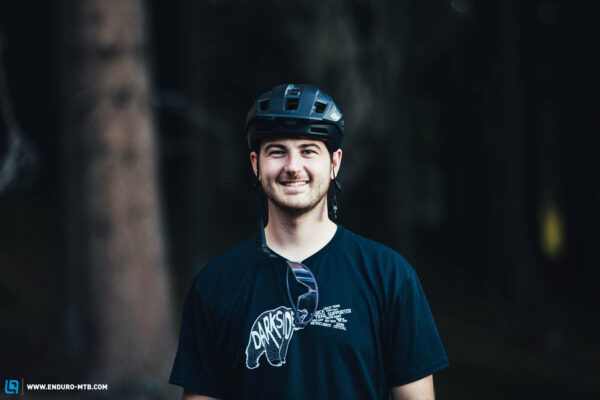
When I found out that the 2023 enduro test field was going to include a couple of exotic UK rippers, I cleared my calendar to join the testing sessions. As a half-Brit myself, I understand the spirit of the bikes like no other tester in the team. Besides, I’ve only been mountain biking for a few years, so my feedback about the bikes perfectly complements the opinion of the experienced test crew.
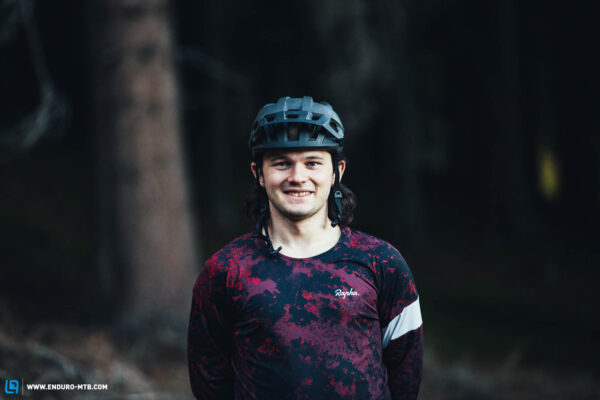
Climbing isn’t at all my thing and if it were up to me, all bikes in this test would come with a single-speed setup. However, I must admit that the eMTBs left me deeply impressed, above all with the excellent composure they offer on big jump lines. Jumping is my passion, and I just came back from a big road trip in British Columbia a few weeks ago.
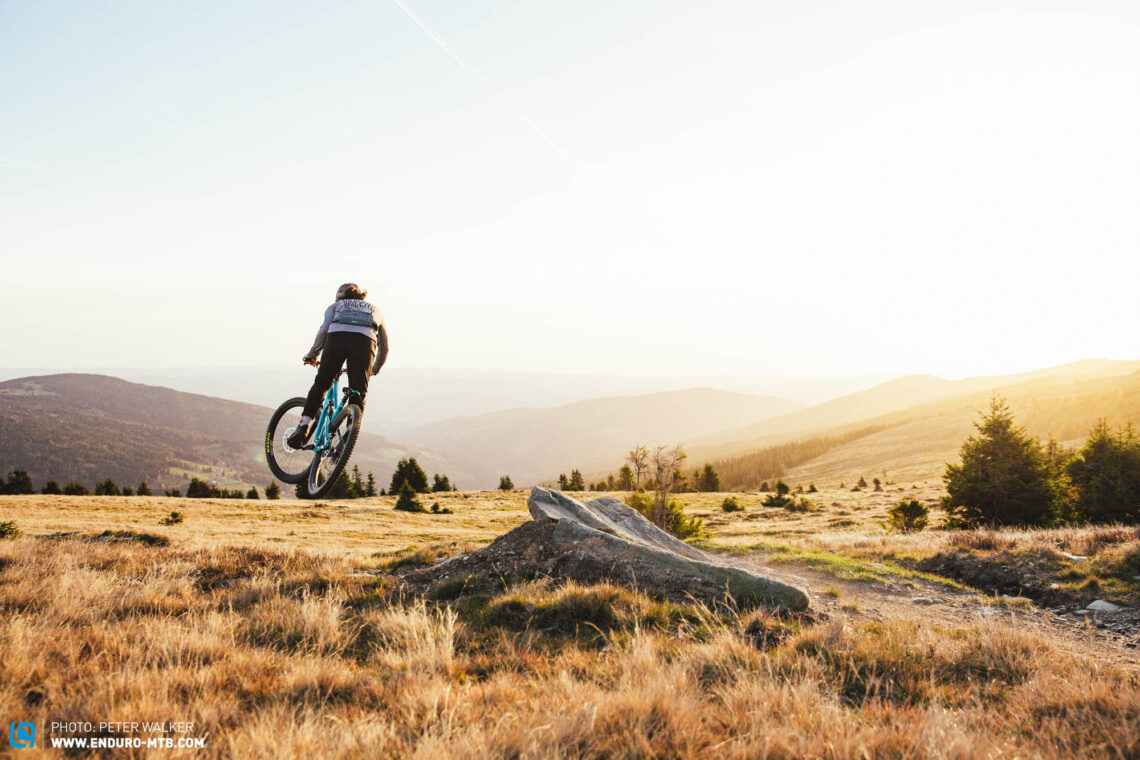
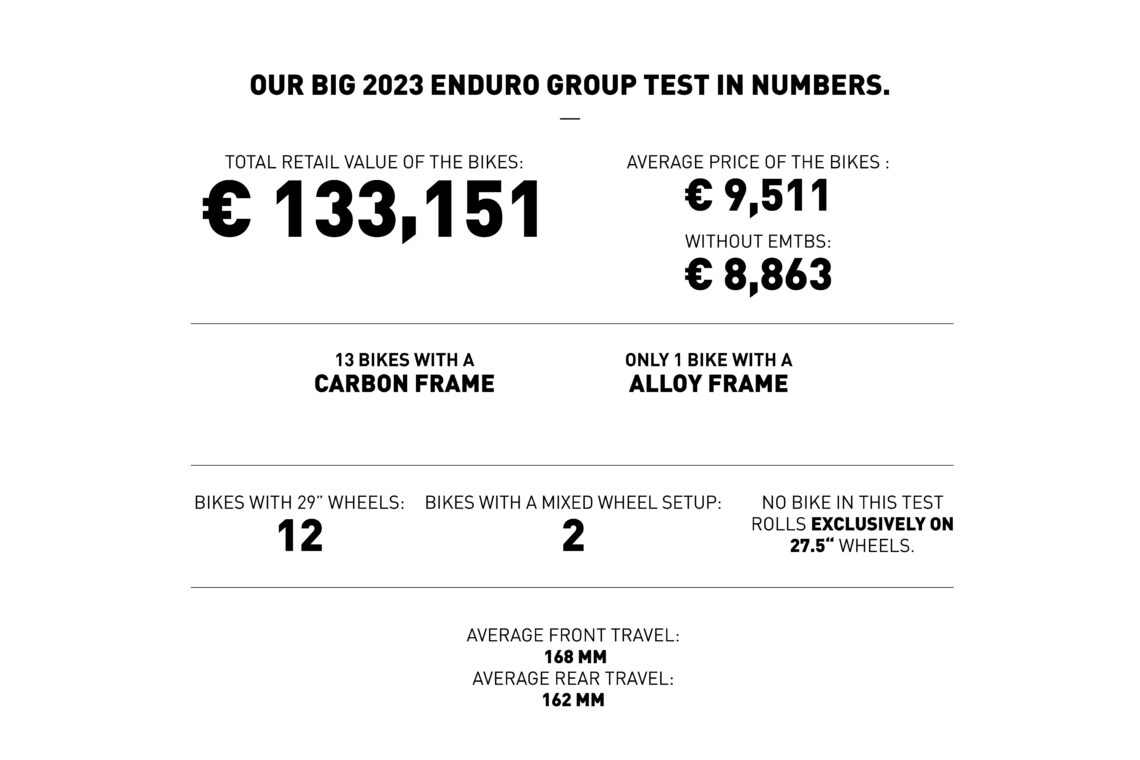
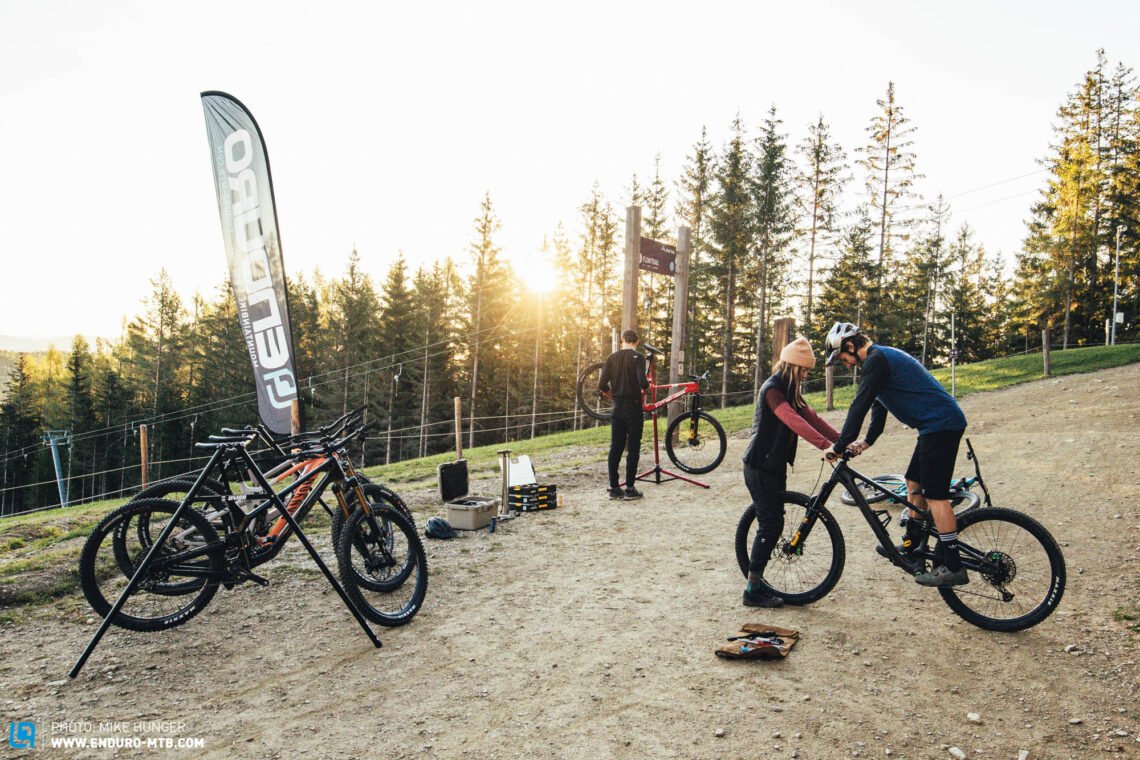

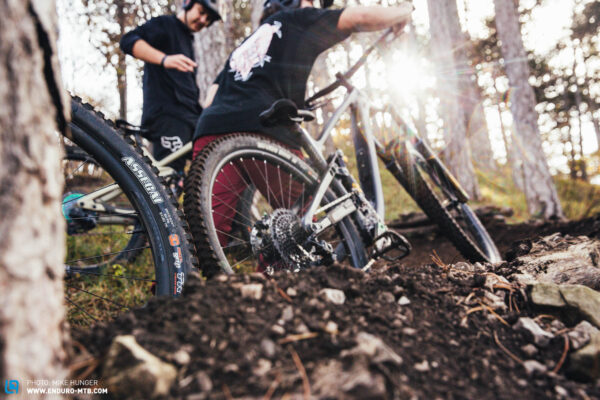
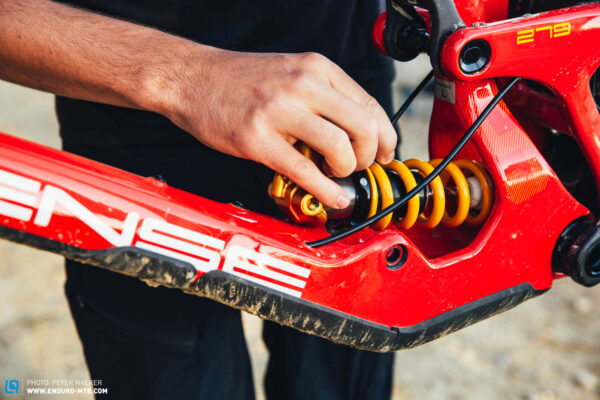
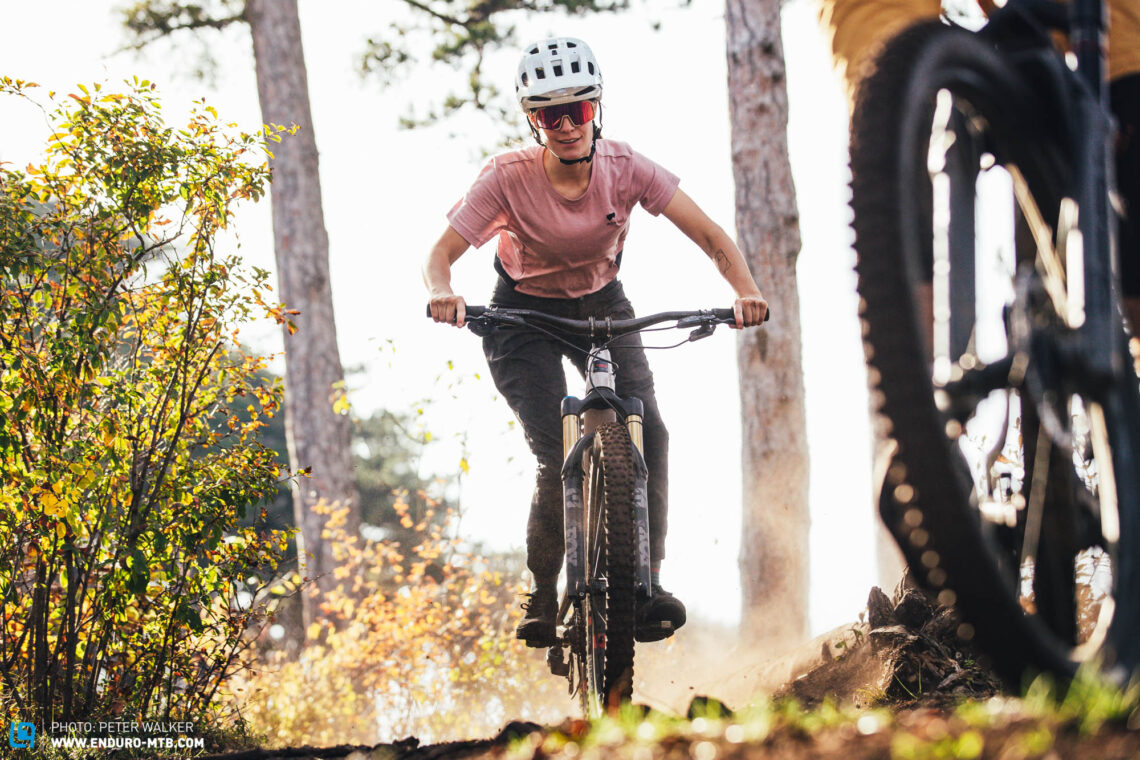

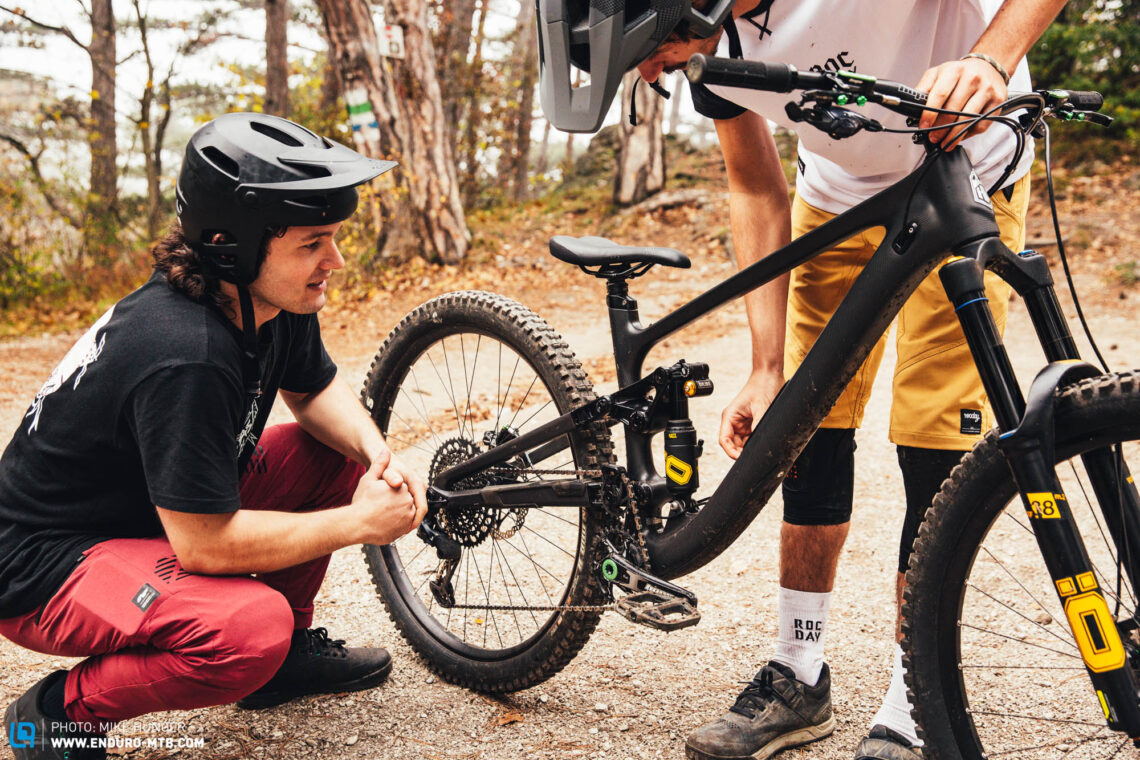

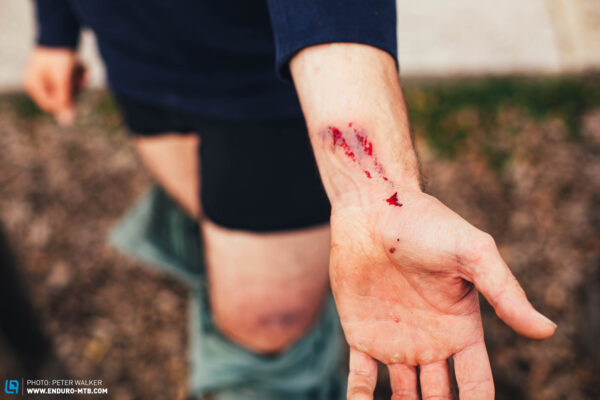
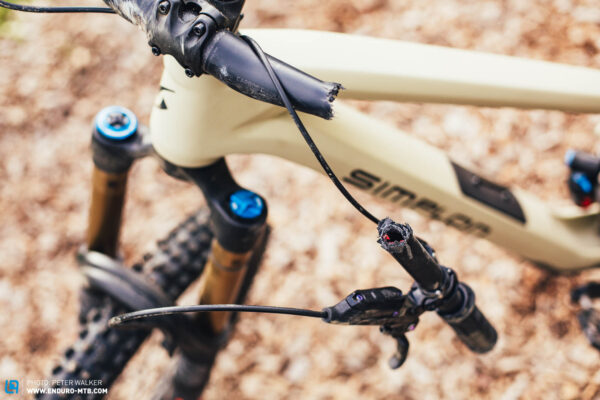
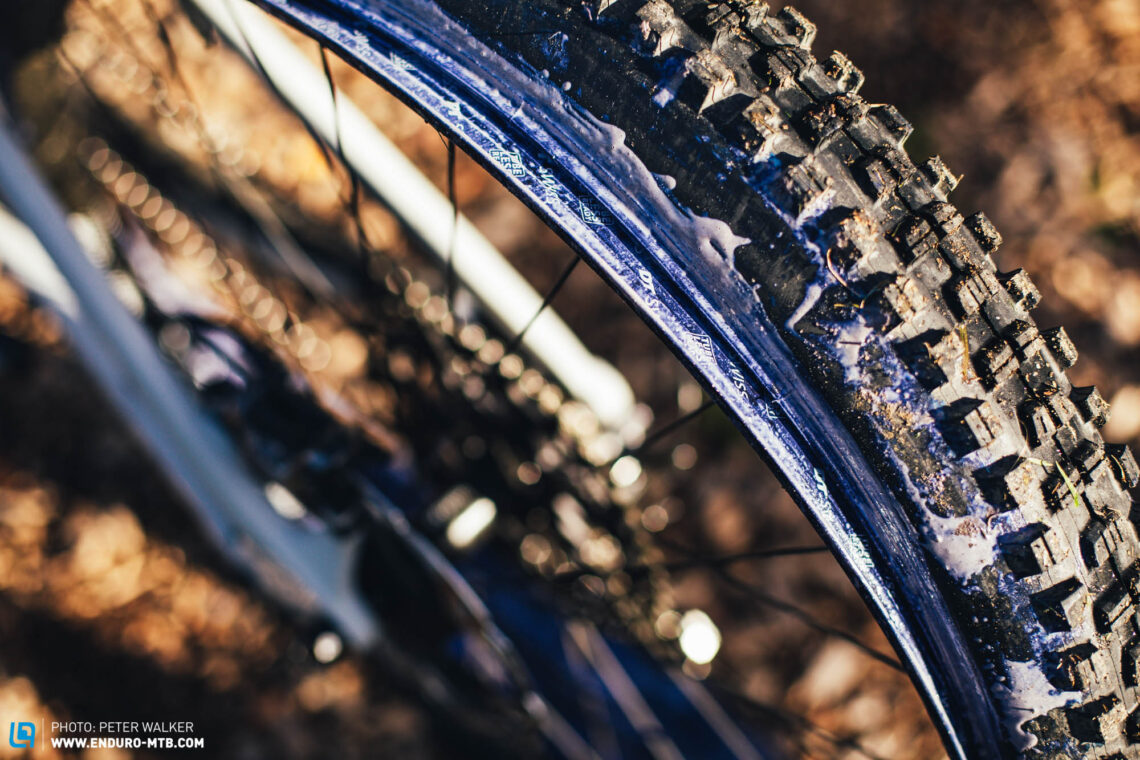


Our test criteria for the “Best enduro bike of 2023” group test
Race ready, do-it-all, no limits! A decent enduro ripper must be ready for all kinds of shenanigans, without hesitating, without complaining and, above all, without letting you down. Of course, the character and capability of a bike depend on countless factors that must be considered collectively based on their combined interactions. What is a bike capable of and where are its limits? What type of rider, terrain and application is it best suited for and who should look for a different type of bike altogether? These are the key questions that lie at the heart of all our reviews. To work out what makes a bike tick and thus provide you with the best possible purchase advice, we don’t use a rigid scoring system but examine and evaluate the countless factors that define its character and individual features that set it apart from the competition.
Enduro bikes are the very epitome of compromise, as they have to combine allegedly contradictory handling characteristics. The best enduro bike should be agile, direct and fun but at the same time offer huge reserves at high speeds. Climbing performance has an impact on the overall rating too, albeit to a lesser extent. Needless to say, the build quality, spec, aesthetics and frame features also play a crucial role – because if you’re going to do something, you might as well do it right! However, all the above criteria should serve one purpose, which is the ultimate criterion in our tests: riding fun! Worshippers of scientific evidence might be frowning while reading this, asking themselves if fun can even be measured. We say yes, and to explain to you why, we’ve broken down each of the criteria – just keep reading!
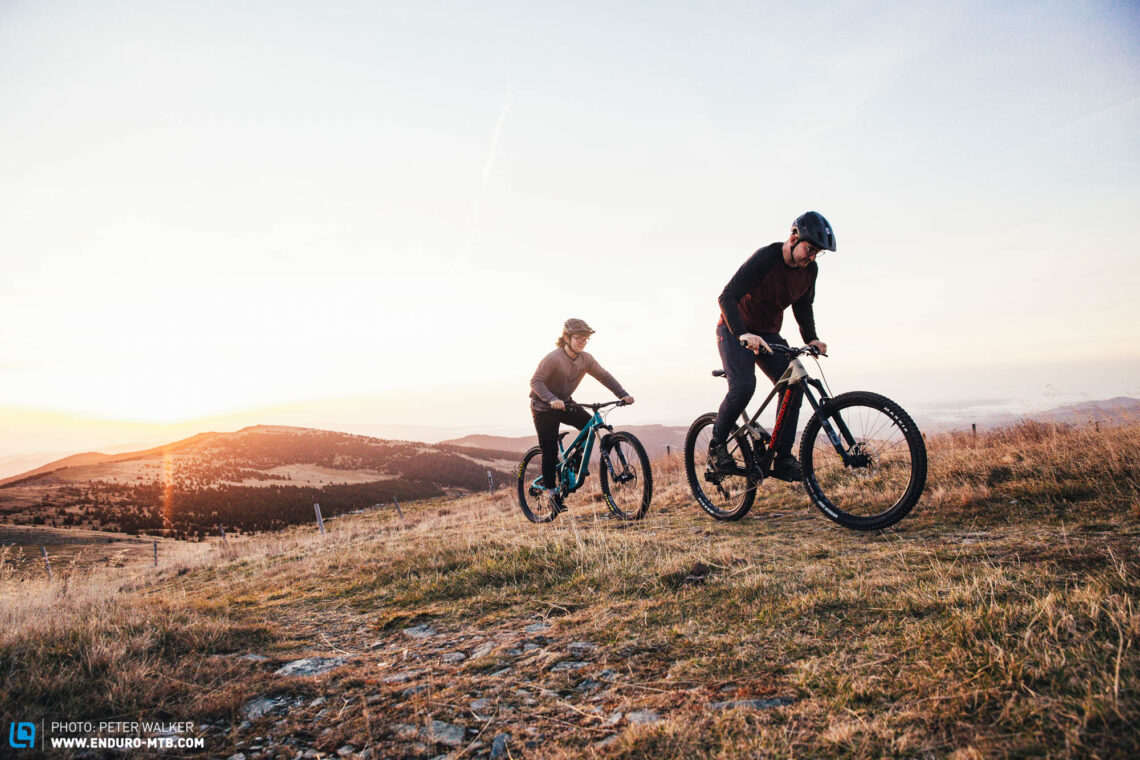
What makes an enduro bike a great climber?
As the name of this group test suggests, we’re looking for an enduro bike and not an XC racer. To shine in this test, a bike has to offer a comfortable and balanced riding position that is suitable for long days in the saddle. A good enduro bike should be easy to pedal and get you to the trailhead with as little physical effort as possible. This can only be achieved with suspension that works efficiently but still generates sufficient traction – although with enduro bikes we tend to make our way to the top of the mountain on relaxed fire roads and flowing uphills. Needless to say, the two eMTBs in this test, the Yeti 160E T1 and SIMPLON Rapcon PMAX TQ 170/165, run outside the competition in this respect, making your life a lot easier on your way to the trailhead.
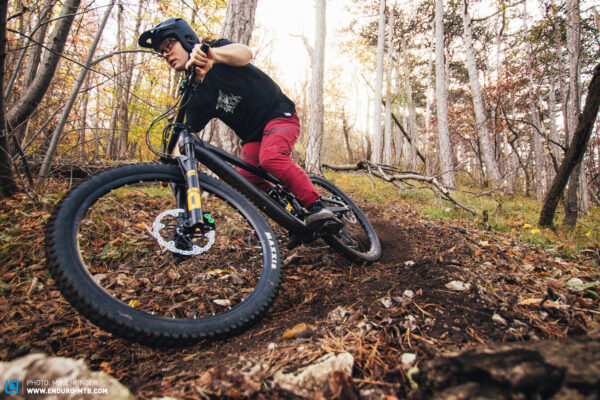
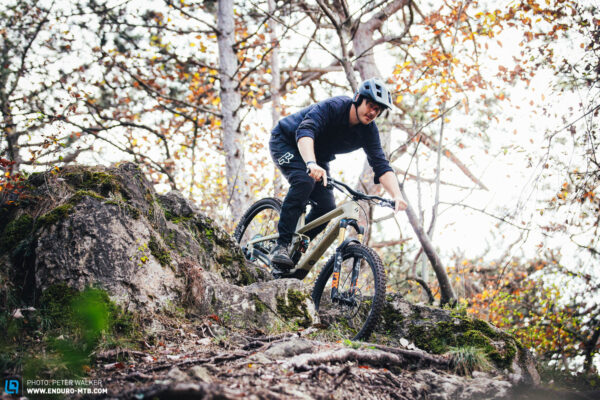
What handling characteristics should an enduro bike have?
Trying to determine the handling of a bike based on isolated geometry values isn’t just wrong but also risky. Despite some near-identical geometry, handling differs enormously, with the suspension, the relationship between measurements (i.e. reach to stack ratio) and setup playing a major role. A good enduro bike positions its rider centrally, is intuitive and easy to manoeuvre and can forgive small riding mistakes. Regardless of whether you’re a beginner or just very tired after a long day in the saddle, intuitive and predictable handling is a god-send. However, some bikes are the exact opposite, requiring a great deal of concentration, excellent riding skills and forcing you to actively shift your weight around the bike to generate traction. If you’re not 100% in control, the tiniest mistake can quickly lead to a crash.
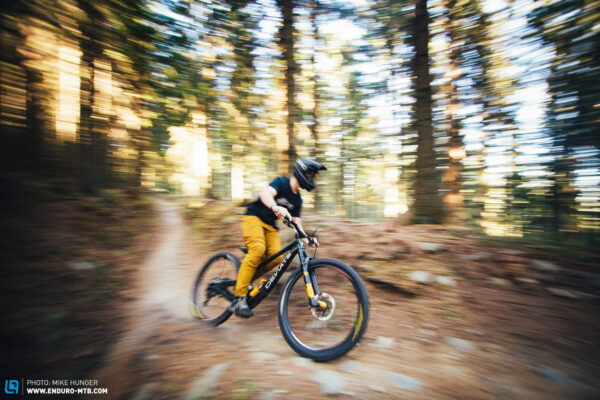
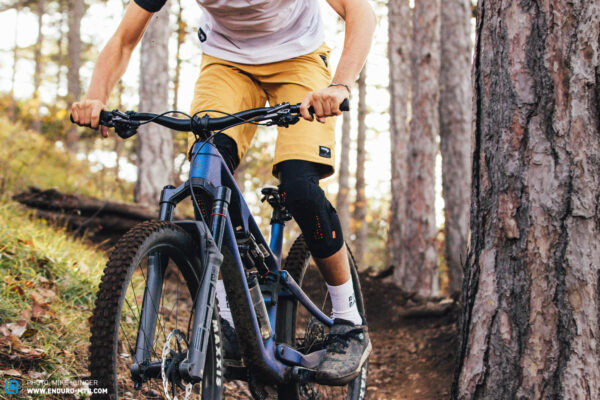
Composure vs agility
No two riding qualities are as antithetical! However, the best enduro bikes manage to combine them. Composure isn’t just about ploughing through a rock garden at Mach 10, but also about having sufficient reserves to swallow big hits and make you feel safe in the process – which is what makes us ride fast in the first place! Agility is the term we use to describe a bike’s ability to move and change direction quickly and efficiently while remaining in control. The more agile the character, the easier it is for the rider to snake through a narrow trail, lean from one turn into the next and throw the bike from a berm into a switchback.
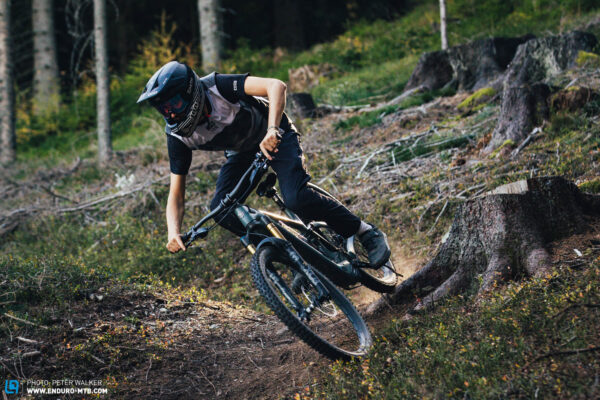
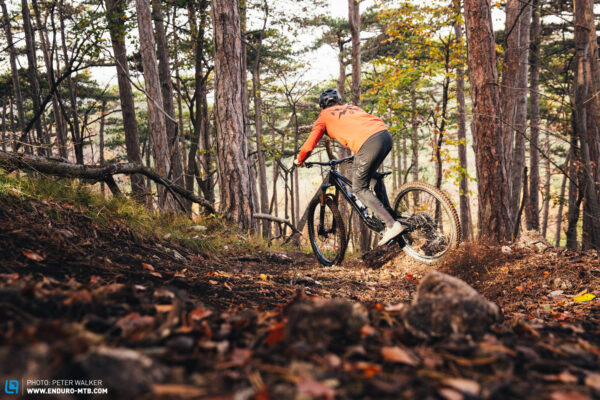
How should the suspension of an enduro bike perform?
Suspension performance isn’t determined solely by the quality or characteristics of its components but also heavily influenced by the shock tune and setup. In other words, taking your bike to the trail is the only way to find out how your suspension performs! The perfect suspension is a fine compromise that combines a high level of traction and responsiveness with sufficient mid-stroke support, lots of pop for playful manoeuvres and good reserves for botched landings. Bikes like the Yeti SB160 T3 and Canyon Strive CFR gobble up nasty impacts with ease and still generate lots of traction, allowing you to focus on the trail ahead. Nonetheless, they don’t absorb the rider’s input like a sand bag, allowing you to play with the terrain and pop off features on the trail as well.
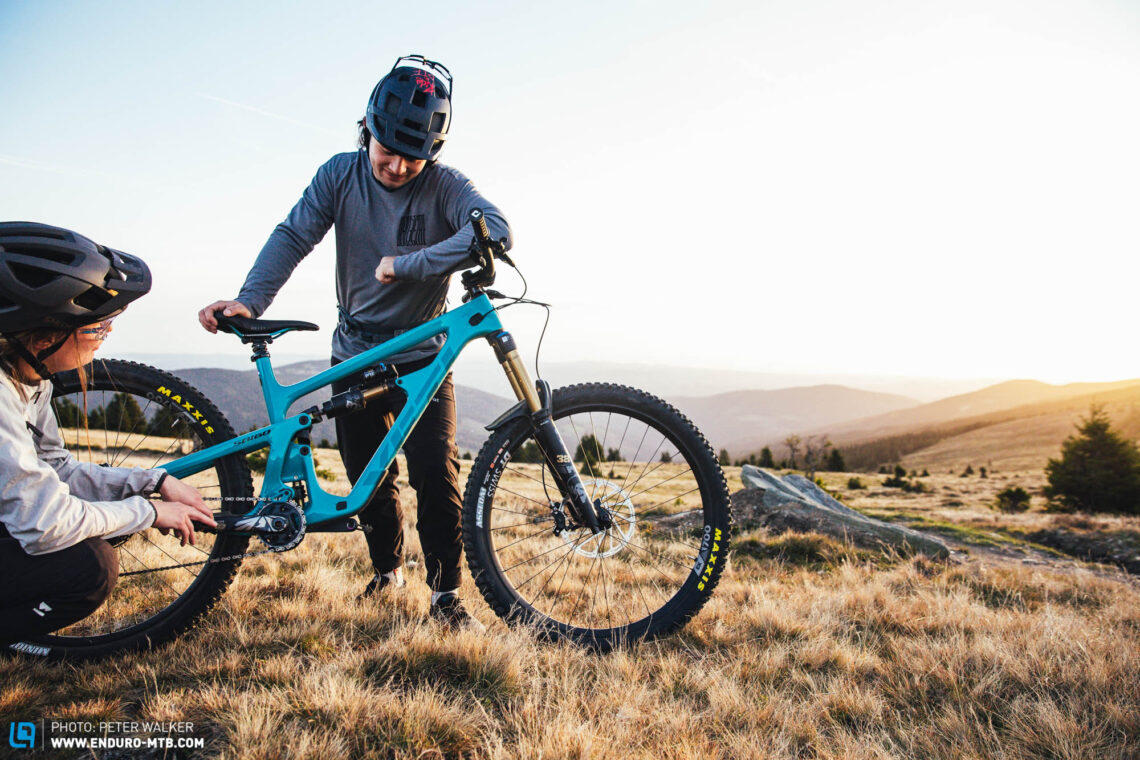
What does the perfect spec of an enduro bike look like?
We all just want to ride our bikes and not spend the entire day fixing shit on the trailside. That’s why it’s crucial to choose your spec according to the intended use. However, many bike manufacturers still cheat to keep the weight down and make their bikes look better on paper and the shop floor! Five bikes in this group test rely on a lighter but also more puncture prone tire casings like MAXXIS EXO+. While these numbers show an improvement over last year’s group test, we urge manufacturers to do better, because thin tire casings force you to run higher air pressures to prevent pinch flats and costly breakdowns – and this comes at the expense of grip and traction. Needless to say, combining fragile tires with expensive carbon rims could easily lead to costly and frustrating damage. Small brake rotors tend to overheat quickly, resulting in inconsistent bite point and requiring more strength to achieve a comparable braking performance. Regardless of your riding skills, this can quickly lead to painful arm pump and fatigue, killing the flow on a perfect day out with your mates. Fortunately, that’s only the case with one bike in this year’s group test and all manufacturers spec their bikes with four-piston callipers front and rear. Bikes like the Yeti SB160 T3 come equipped with a high-end SRAM XX1 drivetrain. However, look closely and you’ll notice that the bling rear derailleur is paired with a shifter, cassette and chain from SRAM’s cheaper X01 and GX range. While the fancy rear derailleur might look great on the shop floor, it only weighs marginally less and doesn’t offer any real performance benefits on the trail – and hurts twice as much when it snaps in half!


How does the weight of an enduro bike influence its trail performance?
Weight still plays a crucial role for many riders and manufacturers and definitely has an influence on the trail performance of a bike. However, both light and heavy bikes have their pros and cons, with weight distribution playing a far greater role than the actual weight.
Riding uphill, a lower system weight saves plenty of energy and contributes to the liveliness of a bike. Once you drop into a trail and the mass starts rolling and maintaining its speed, the perks of a light bike are marginal. If well positioned, a higher mass adds stability and composure when riding downhill, which is of great advantage particularly for beginners. During our test, this became particularly evident with our heavier electric candidates. The higher mass is also clearly noticeable with bigger jumps, where heavier bikes inspire more confidence, unless you’re trying to impress your mates with slopestyle tricks. When a bike is too light, it can feel unstable, twitchy and even fragile, robbing you of confidence and making you feel vulnerable. Are light bikes nimbler? Not necessarily, because suspension performance always trumps weight – and what’s the point in having the lightest bike on the planet if it swallows up your input like a sandbag? As the heaviest bikes in this test, the Yeti 160E T1 and SIMPLON Rapcon PMAX TQ 170/165 prove our point, because the two eMTBs convince above all with their excellent, super-firm suspension. Despite the extra mass, they’re both nimbler than some analogue bikes, like Norco’s Range C1, which is over 6 kg lighter. As already mentioned, weight distribution plays a major role too. A low centre of gravity, rotating mass and uneven weight distribution between the front and rear can bring along all sorts of pros and cons and must suit the overall package just as well as the geometry, kinematics and spec of the bike.
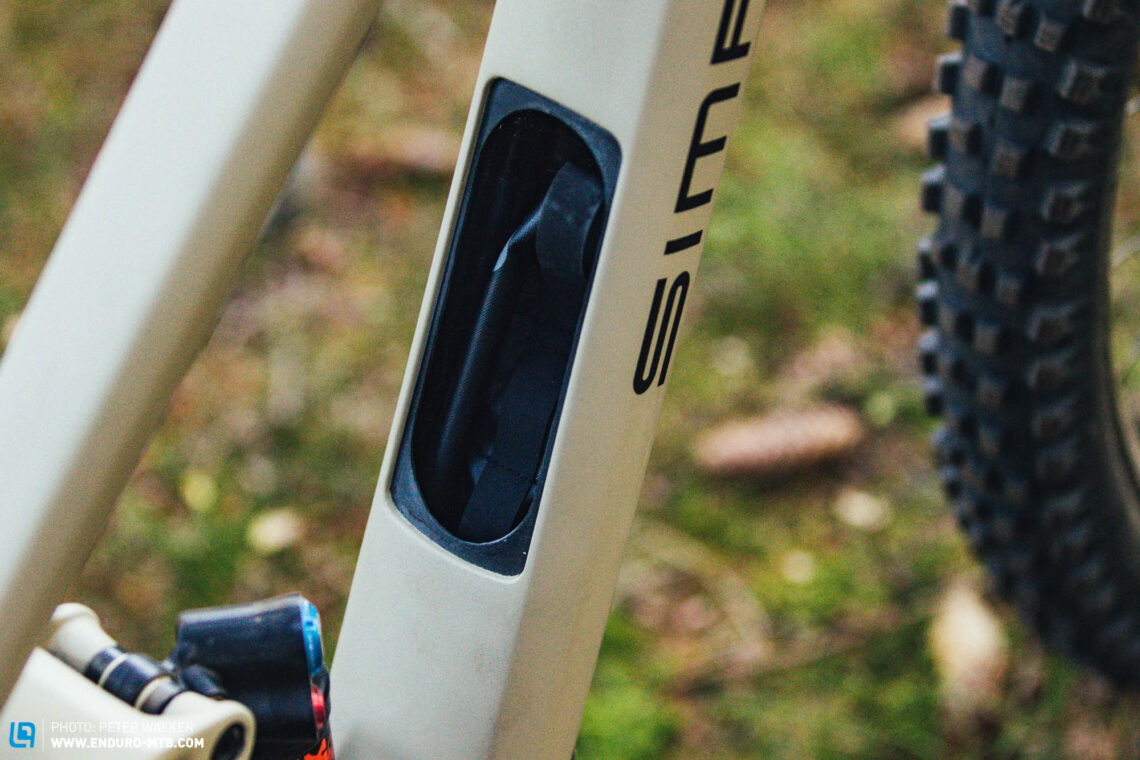
What clever solutions should be standard on all enduro bikes?
Clever and useful frame features can, albeit indirectly, boost the fun factor of an enduro bike enormously. For example, additional storage options such as an integrated storage compartment or tool mount on the frame, allow you to leave your backpack or hip pack at home and keep your back cool on hot summer days. On the other hand, threaded bottom brackets make it easy to replace knackered bearings, saving you time and disgraceful swear parades. All bikes in this group test have bottle cage bosses, seven frames feature a tool mount on the top tube and just as many come with an integrated storage compartment in the downtube, showing a clear trend – that’s exactly three times as many as last year. However, every manufacturer relies on a different cover, closure system and position for their storage compartments. Both Santa Cruz bikes as well as the SIMPLON Rapcon 170/165 and Specialized Stumpjumper EVO Elite Alloy employ a well-thought-out locking system that is easy to operate, even when the bike’s covered in mud or you’re wearing gloves. Some manufacturers like Intense and MERIDA position the opening of the compartment at the bottom of the down tube. While this prevents the contents from falling into the depths of the frame, it will get you dirty hands eventually, because the opening is facing the ground, where it’s constantly exposed to mud and dirt. Nevertheless, more is always better and every additional storage option is one less object (or several) you have to carry on your body. This also helps reduce the risk of injuries, because falling on your mini-tool or CO2 cartridge really sucks!
Internal cable routing, frame protection, universal spares and additional plastic covers like a mudguard, help reduce wear while increasing the fun factor and improving the look of the bike. Generously-sized protectors on chainstays, seat stays and the down tube ensure a quiet ride and protect the frame from stray rocks. That being said, some of the bikes in this test play a loud rattling concert on the trail, which can be frustrating, especially when you’ve just spent several months worth of wages on them – unfortunately, the Deviate Claymore is one of them! Most of the bikes in this test feature SRAM’s UDH, aka Universal Derailleur Hanger, which should be easy to find in pretty much all bike shops around the world. By contrast, conventional mech hangers are specific to one frame and have to be sourced directly from the manufacturer or a distributor.
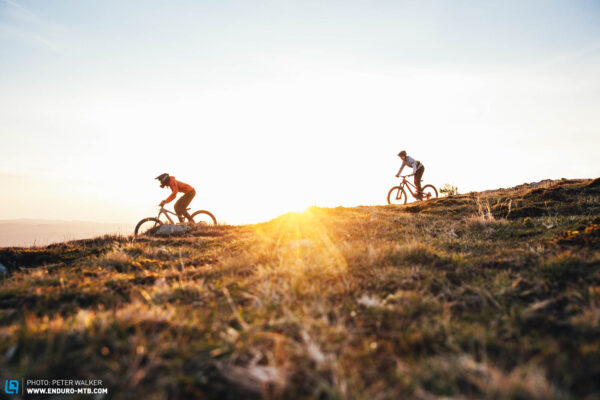
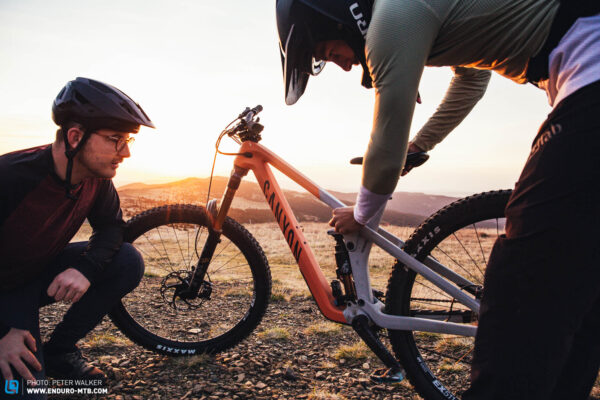
Does the spec of an enduro bike speak for its performance?
Price plays a subordinate role in this group test. It’s not that we don’t care about money, but we’re deeply convinced that the price of a bike should always be commensurate with its performance. That’s why we refuse to calculate value for money based on the spec sheet of a bike or the amount of bling you get for your money. We’re more concerned with how a bike performs on the trail and how it benefits the rider. What’s the point in rocking the hottest components available on the market if the bike doesn’t perform well on the trail? Even expensive bikes with a lower-end spec can offer good value for money, provided they deliver when it really matters, in the same way that supposedly cheap bikes with good components can get a bad rating if they don’t deliver on the trail. What really matters is the interaction of all elements, from the suspension through to the geometry all the way to the spec.
The tops and flops in our 2023 enduro comparison test
Tops
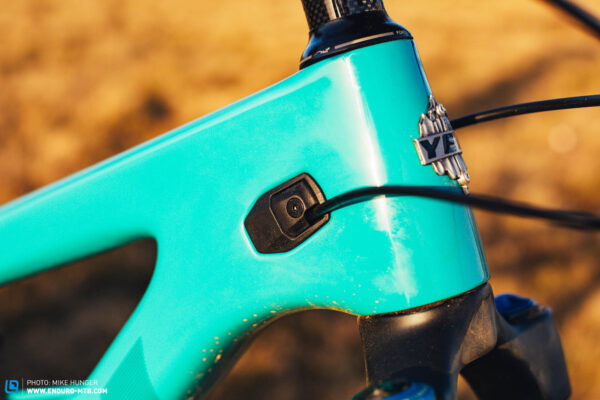
Most bikes in this test are totally quiet on the trail. Manufacturers achieve this, among other things, by securely clamping the cables at the ports and using generously sized chainstay protectors.
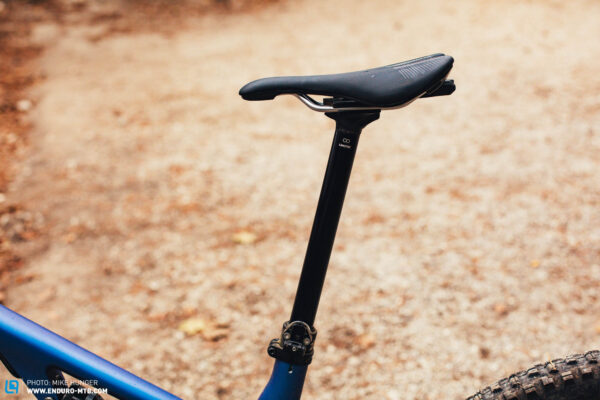
Increasingly longer, year after year! The average dropper post travel stands at a proud 191 mm. That’s awesome and, together with the trend of increasingly shorter seat tubes, ensures plenty of freedom on the bike.
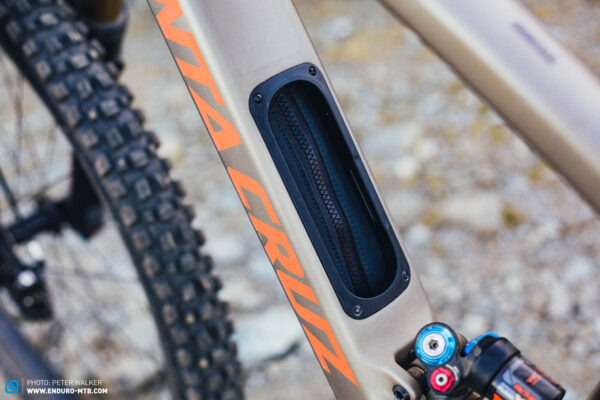
Most bikes in our 2023 enduro group test feature a tool mount or storage compartment in the downtube. While the approaches are quite different, most systems convince with a sensible concept and practical closure systems.
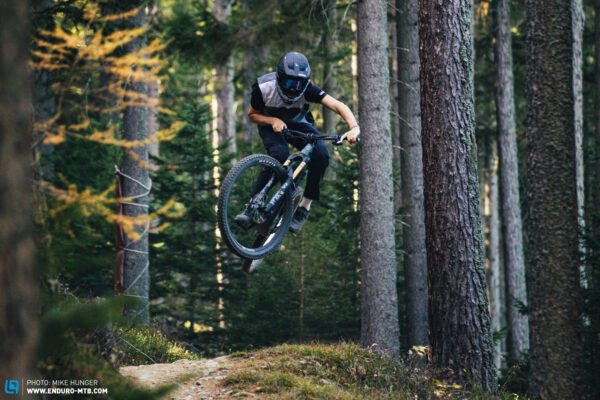
Suspension performance and weight distribution are far more important than weight, and the two eMTBs in the test clearly proved this. Both are excellent competitors and and, in some cases, even more agile than some analogue bikes.
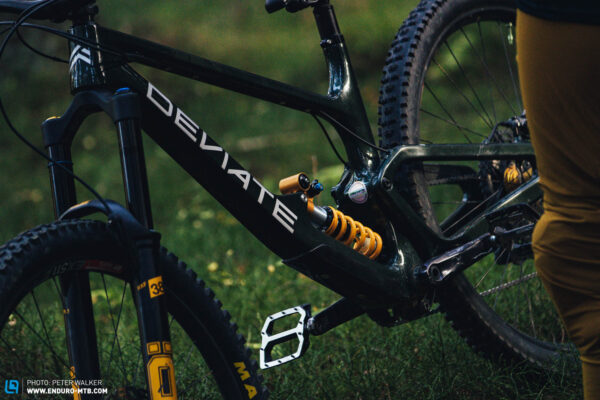
Even externally routed cables can be neatly integrated into the frame. The Scots at Deviate show us how it’s done, combining easy accessibility with an extremely discreet look.
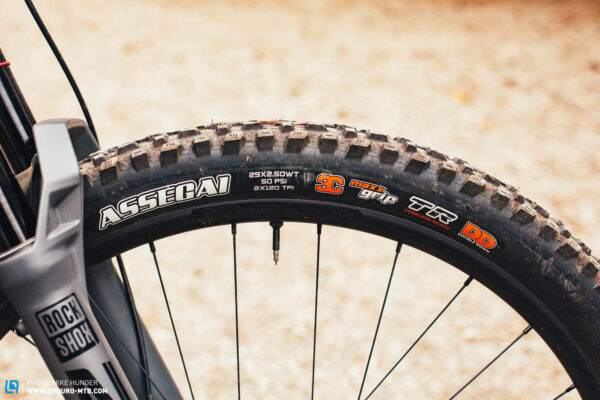
Once again, the number of bikes with robust tire casings is on the rise, offering all sorts of advantages on the trail.
Flops
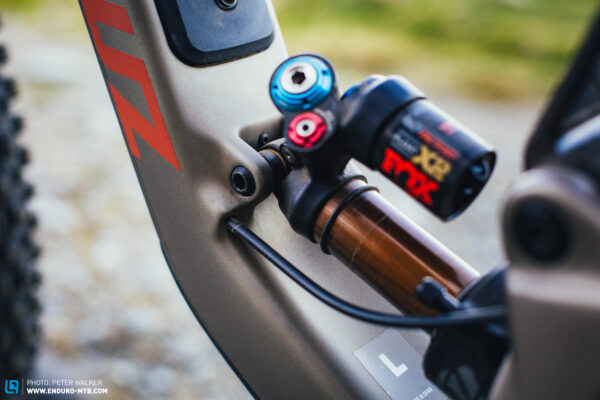
On both the Santa Cruz Nomad and Megatower, the rear brake line isn’t clamped at the exit port, causing an annoying rattling noise on the trail.
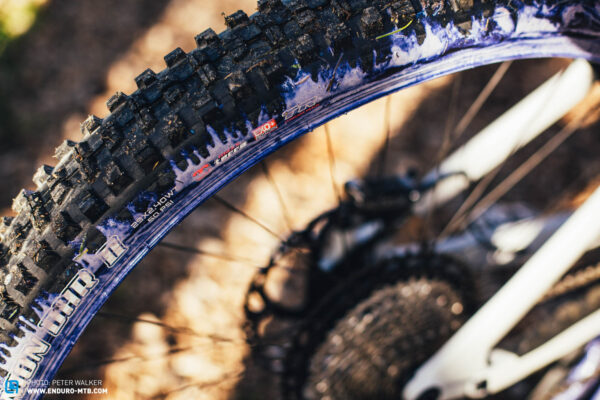
Not only do paper-thin tire casings increase the risk of punctures but also struggle to withstand higher cornering forces, forcing you to run higher tire pressures.

Some manufacturers position the storage compartment below the bottom bracket, where it’s constantly exposed to mud and water.
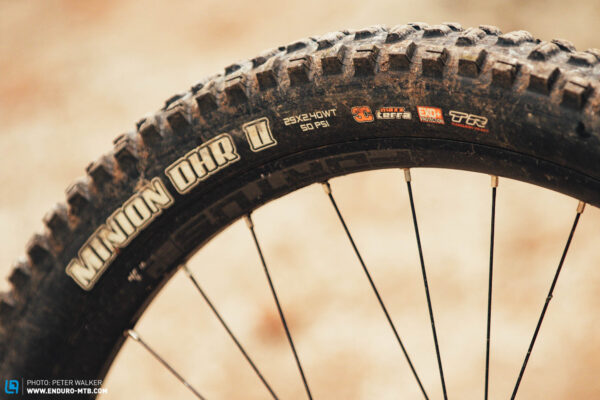
Some manufacturers use the harder MaxxTerra rubber compound on the front wheel, which comes at the expense of traction. A softer rubber compound would make a huge difference, and wear and rolling resistance are negligible on the front wheel.
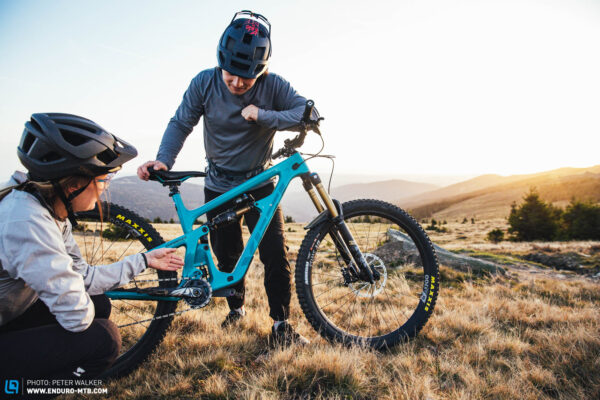
The two Yeti bikes are the only bikes in the entire test field that have neither a toolmount nor an integrated storage compartment. However, the trend is going in the other direction.
Which is the best enduro bike of 2023? Winners, losers and other recommendations
Enduro is alive and kicking! Almost all bikes in our 2023 group test delivered an impressive performance, although each one with a different character and approach. The “Best enduro bike of 2023” group test was a hard-fought race, but we’ve got a winner, a Best Buy tip and other exciting recommendations for you.
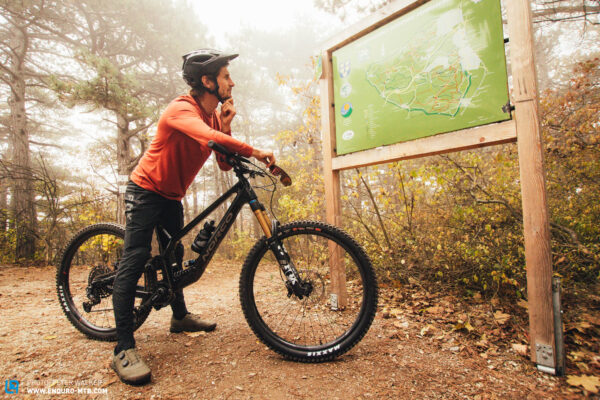
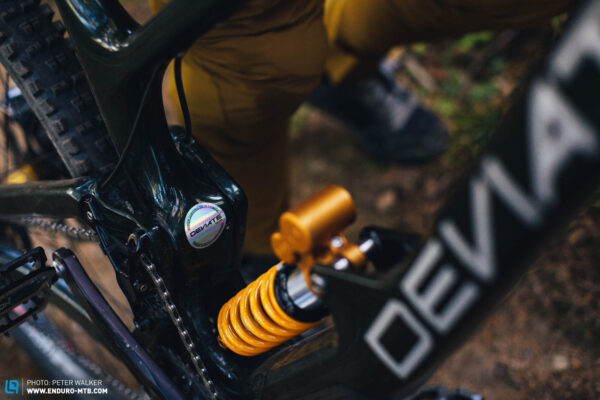

For a better overview, we’ll first introduce the bikes that haven’t secured a title in this group test, along with their respective tops and flops. As the only custom built in this test, the Deviate Claymore marks the lower end of the pricing, simply because it’s only available as a frame set for the time being. In return, it will be delivered straight to your door from Scotland, and be one of a kind on your local trails! The flying Scot relies on a high pivot suspension design, which Deviate have been using and refining over the past six years. Moreover, the Claymore is the only bike in this test to rock external cable routing, which is nevertheless very tidy and discreet. On the trail, the Claymore convinces with good all-round qualities but requires an experienced rider who can deal with the demanding handling. Another high pivot candidate is the new, very elegant Hope HB916, which relies on many of the British brand’s beautifully machined, colourfully anodised components – a real head turner on the trail and the ultimate fix for all ANO-junkies! However, Hope’s fancy bruiser relies on a carbon frame and puts a massive grin on your face with its balanced handling and excellent suspension, both up and downhill. The third bike in the idler-pulley class is the Norco Range C1, which rides exactly as its boisterous appearance and high pivot frame suggest. Simply put, the Range C1 is a brutal trail ripper that doesn’t know limits, especially on fast straights, encouraging you to get rowdy with its deeply integrated riding position, plush suspension and insane composure. On narrow and slow trails, however, you’ll have to work harder to swing the extra weight and plush suspension of the Norco around the corner.
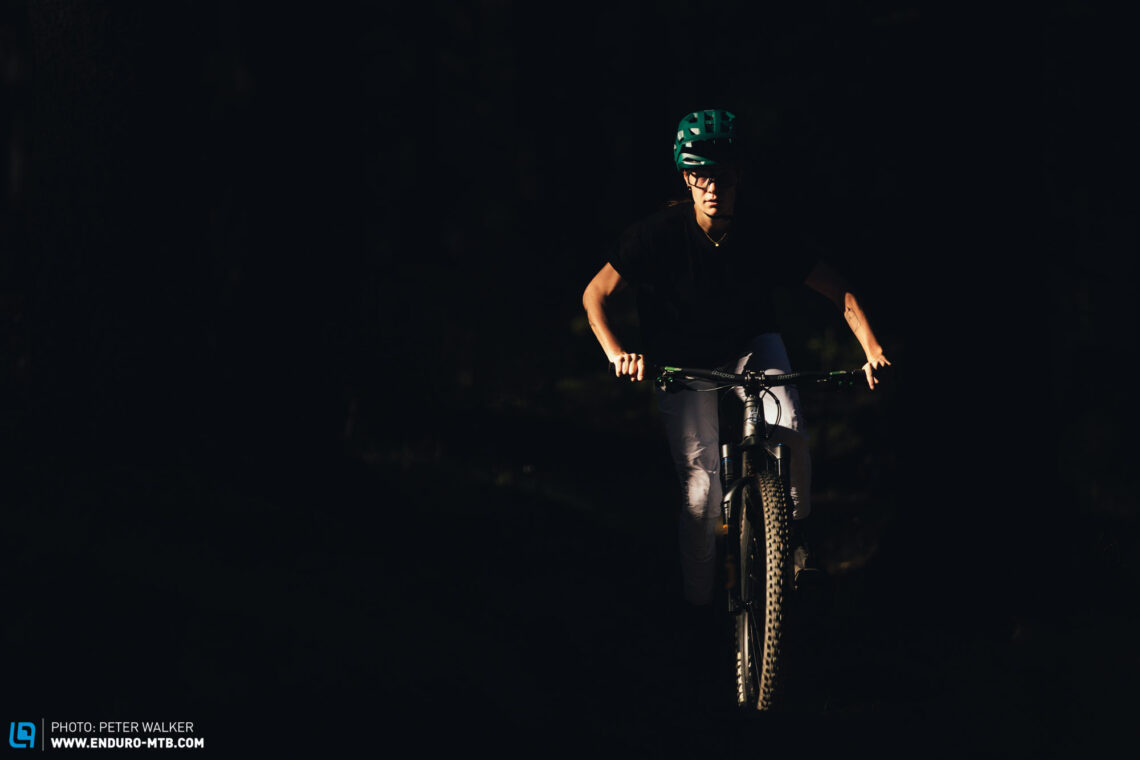
With its MX wheel setup and super-potent spec, the red-hot Intense Tracer 279 S narrowly missed out on the title. While rolling uphill in the midfield, downhill it convinces with very intuitive handling, excellent agility and a strong suspension, proving to be an excellent all-rounder. The Santa Cruz Megatower CC X01 AXS RSV offers similar handling characteristics but requires a more active riding style to unlock its full potential. Santa Cruz’s enduro racer provides plenty of feedback from the ground, which takes an experienced rider to keep at bay. If you know what you’re doing, the Megatower is nimble yet composed, inspiring huge amounts of confidence and encouraging you to improve your PRs. Particularly exciting is the comparison with its freeride sibling, the Santa Cruz Nomad CC X01 AXS RSV, which shares near identical specs and the same front triangle, except for the shock link for the smaller 27.5″ rear wheel. Despite the similarities, the two Santas have completely different characters, with Nomad gobbling up anything you throw at it with its plush suspension but providing far less support than its racing sibling. Overall, Santa Cruz’s freeride bruiser inspires tons of confidence, especially on steep terrain, appealing mainly to riders who care about collecting good times, not fast ones.

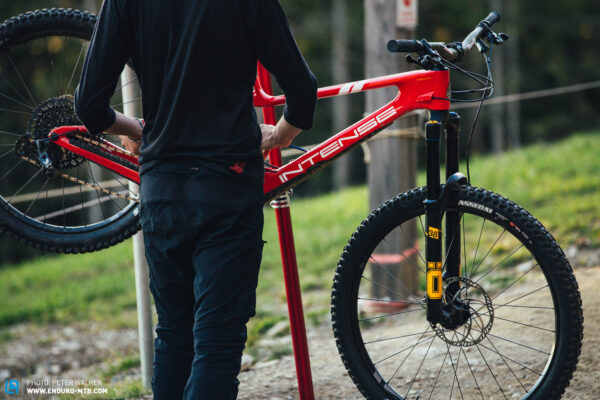
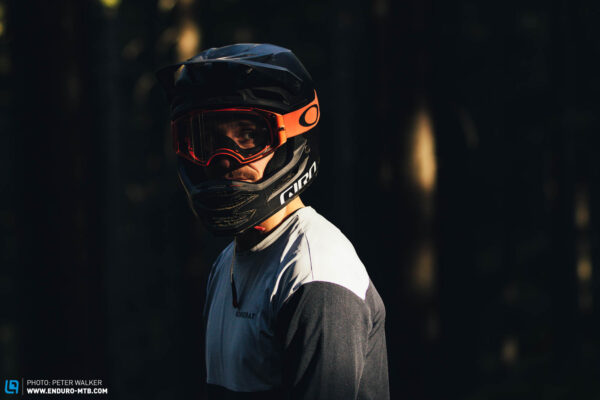
We can’t remember the last time a Specialized bike was the cheapest contestant in one of our group tests and, quite frankly, we’re used to seeing the Cali brand on the other side of the price spectrum. That’s partly due to the fact that the Stumpjumper EVO Elite Alloy is the only bike in this test with an alloy frame. Moreover, it’s classified as a trail bike on Specialized’s website and not necessarily intended for rowdy enduro sessions. However, the Stumpi still managed to hold its own against the test field, convincing with intuitive and predictable handling and excellent agility, even on rough terrain. Only when the going gets fast, does the EVO reach its limits and start to feel a little twitchy. The Mondraker Carbon Foxy RR takes on the competition as the lightest bike in the entire test field and also the one with least travel, which is right at the limit for the intended use. The sharp look rubs off onto the trail, where the Foxy impresses with its stiff suspension and direct handling. However, the latter requires a very experienced rider who can handle the direct feedback without being flung into the foliage headfirst, because the Mondraker hardly forgives any mistakes. The MERIDA ONE-SIXTY 8000, on the other hand, impresses not only with a unique sizing concept that combines a short seat tube and long-travel adjustable dropper post, but also on the trail with intuitive handling and excellent suspension performance. The coherent spec and many practical features, like the hidden multitool and storage compartment, round off the harmonious overall package, making the MERIDA a strong and super-fun all rounder.

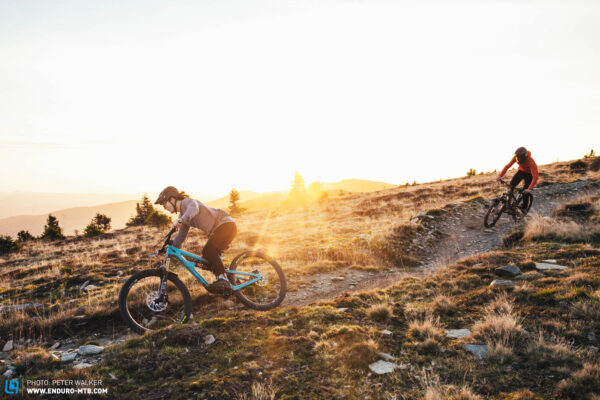
Yeti’s 160E T1 eMTB made it into the test for a good reason. Not only did it secure victory in the “Best eMTB of 2022” group test of our sister magazine E-MOUNTAINBIKE, but also delivered an impressive performance against the analogue test field in our 2023 enduro comparison test. The strong suspension generates plenty of traction and at the same time provides excellent high-speed stability and airtime composure, which is particularly helpful for inexperienced riders. While the SIMPLON Rapcon Pmax TQ 170/165 relies on a motor too, it looks more discreet than the Yeti and churns out slightly less power, providing 50 Nm torque. With its excellent suspension and intuitive handling, it can also keep up with many of its analogue opponents downhill, where the additional mass ensures excellent composure, allowing even unfit riders to join the trail party. That’s partly due to the fact that SIMPLON’s eMTB employs the same suspension, geometry and some of the features of its analogue counterpart, the SIMPLON Rapcon 170/165, which secured victory in last year’s enduro group test. The motorless Rapcon still convinces as a very strong all-rounder with awesome features, offering an excellent compromise between composure and agility on the trail. However, it was time to pass the throne to the next generation!
The best enduro bike of 2023 – The Yeti SB160 T3
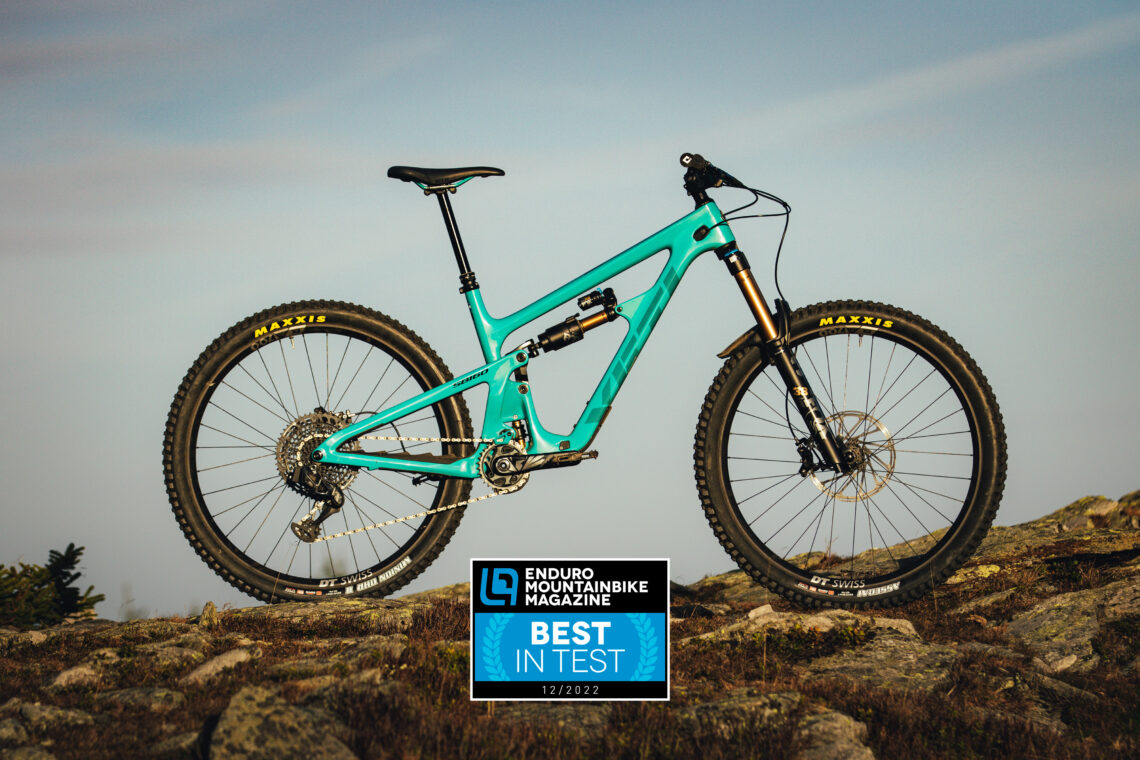
170/160 mm (f/r) | 29″ | 15.6 kg in size L | € 11,990
Yes, the Yeti SB160 T3 is one of the two bikes in this test that has neither a tool mount nor a storage compartment. On top of that, the stock tires don’t do justice to the potential of the bike and the € 11,990 price tag is truly eye-watering. Nevertheless, the Yeti convinces with countless frame details, including the revised cable routing system and, above all, an impressive trail performance, thus securing the “Best enduro bike of 2023” title, albeit with a very small margin! The suspension generates plenty of traction and at the same time provides tons of support and reserves, allowing you to pump through rollers and commit to big drops without hesitation. Throw the intuitive handling into the equation, and the Yeti encourages you to take daring lines at speeds you wouldn’t even dream of with other bikes.
Our Best Buy Tip – The Canyon Strive CFR
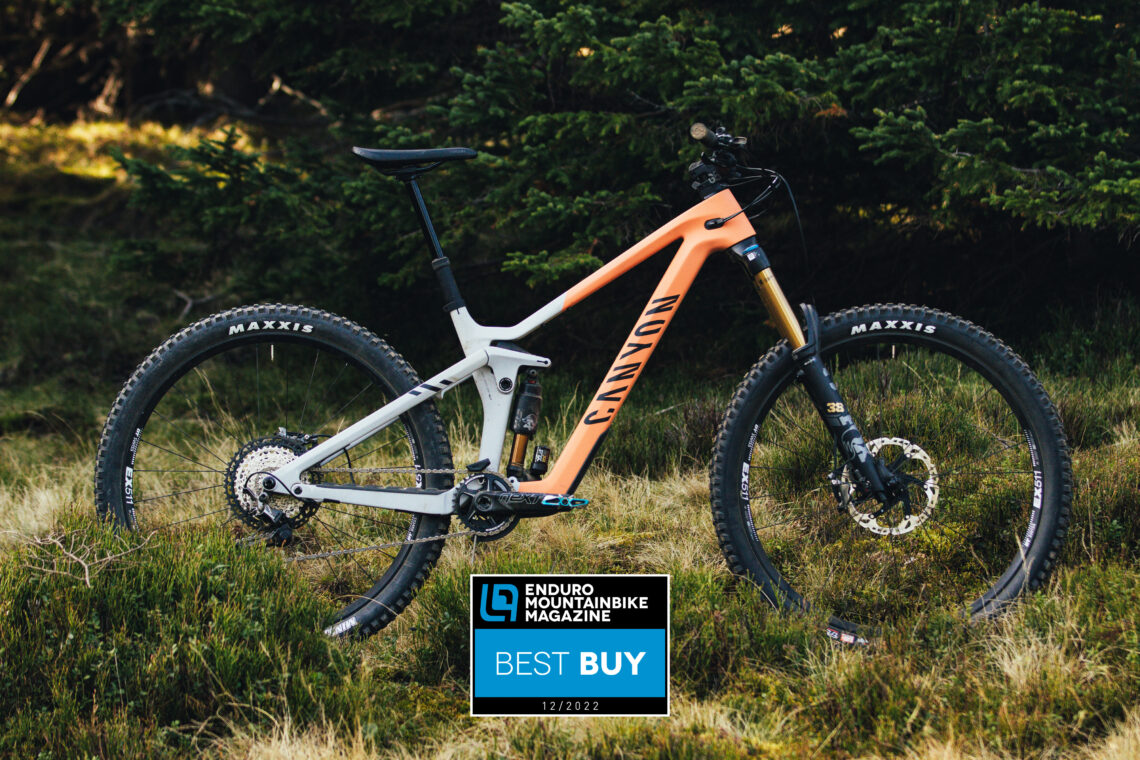
170/160 mm (f/r) | 29″ | 15.7 kg in size M | € 6,299
Retailing at € 6,299, the Canyon Strive CFR is the cheapest bike in the entire test field and the only one from a direct-order brand. In our 2023 group test, it missed out on our coveted Best in Test title by a hair’s breadth, but secured a well-deserved Best Buy Tip, convincing with a cool spec at a fair price (only the tires could do with an upgrade) and countless practical features, like Canyon’s proprietary Shapeshifter, which has many advantages and only requires a short familiarisation time. On the trail, the Strive feels extremely balanced and puts a massive grin on your face with its awesome suspension. However, be careful when choosing your size ;)
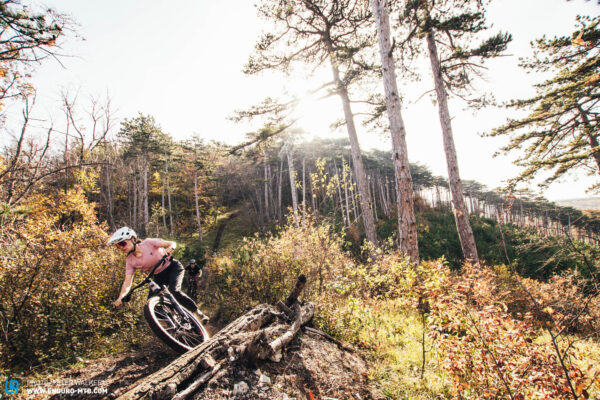
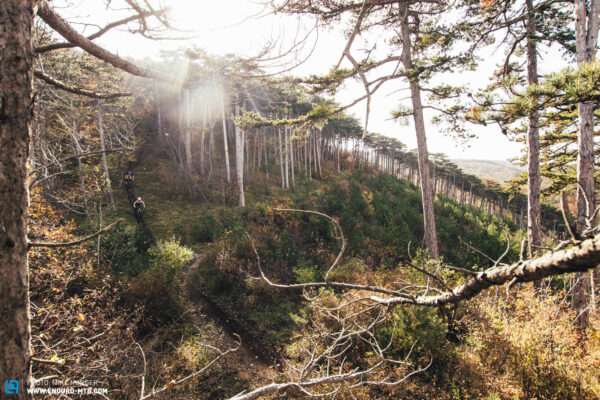
More exciting enduro bike recommendations:
The MERIDA ONE-SIXTY 8000: master of integration
No bike in this test has more hidden features than the new MERIDA ONE-SIXTY 8000. These include a spacious storage compartment in the downtube, a tool strap on the shock mount and two minitools, which are hidden under the saddle and in the rear thru axle, respectively. Furthermore, the MERIDA relies on a cool geometry and sizing concept which, together with the adjustable, long-travel dropper post, allows you to choose from at least two sizes . On the trail, the MERIDA convinces as a versatile all-rounder with good suspension and intuitive handling. If you’re a bit forgetful and looking for a solid bike for all kinds of trail shenanigans, the MERIDA is a great choice.
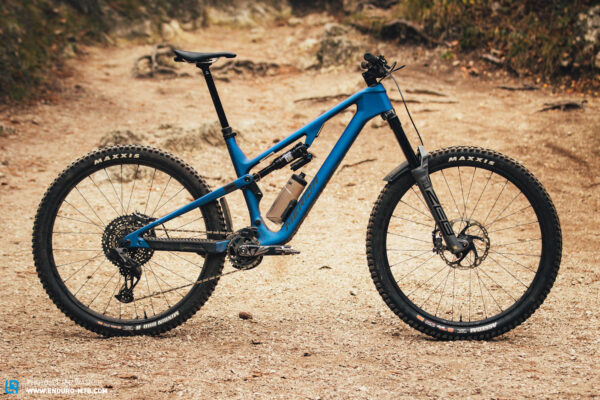
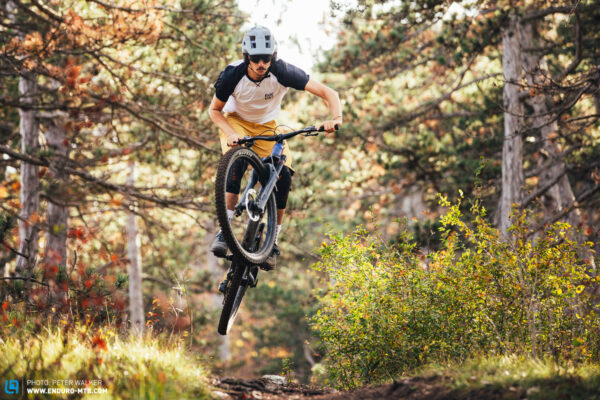
The Santa Cruz Megatower CC X01 AXS: the alpha-sibling
Siblings’ love is a great thing and having a favourite child is totally out of fashion. However, we don’t care about trends and cheerfully pick the Megatower over Santa Cruz’s freeride bruiser, the Nomad. Despite sharing near identical frame details, specs and geometries, the two bikes are completely different on the trail, where the Megatower outperforms its freeride sibling with more balanced handling and better all-round characteristics. That’s provided you can handle the firm suspension, which provides plenty of feedback from the ground. If you know what you’re doing, the Megatower is a damn fast companion for races and rowdy trail parties.
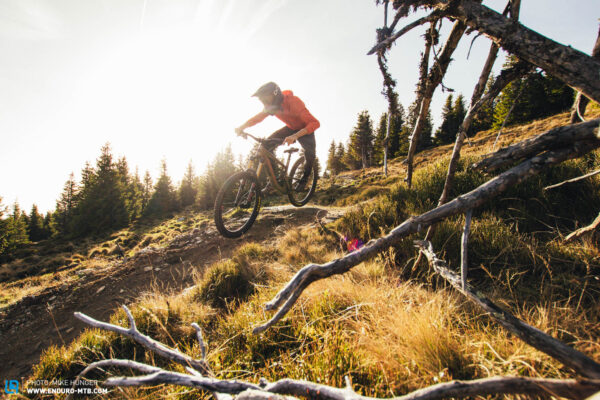
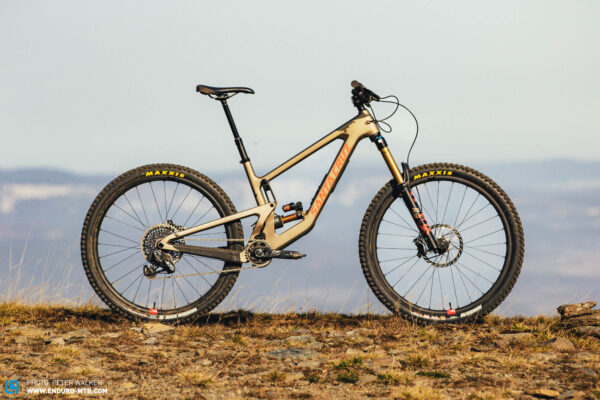
The Intense Tracer 279 S: your new mullet bike?
The Tracer features what is perhaps the most robust, downhill-oriented spec in the entire test field. This includes a coil shock, powerful brakes and tires in the robust DH casing. Alongside the mullet setup, you’ll get excellent suspension and shed loads of composure. However, the Tracer also impresses with agile, intuitive handling, negotiating even tighter trail sections without breaking a sweat. Mullet fans, go for it!
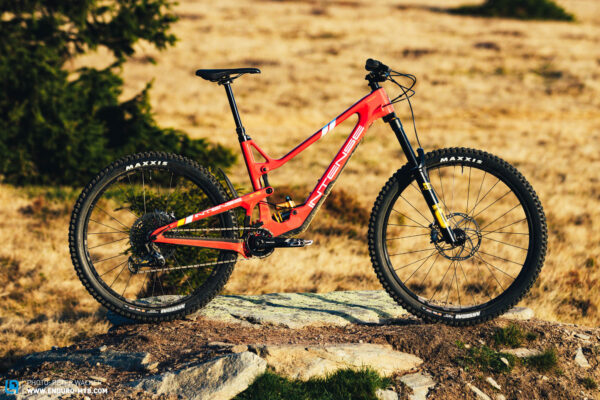
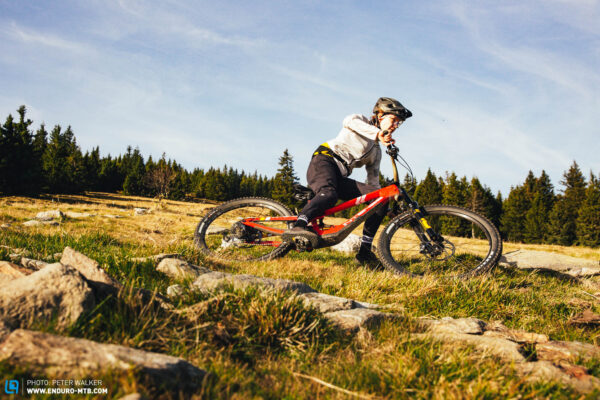
The Norco Range C1: Corner? What corner?
While the Norco might not be your textbook allrounder, it’s hard to beat on fast trails, where it impresses with excellent composure and huge amounts of confidence. This makes Norco’s high pivot ripper the perfect companion for rowdy trail hitters who want to plough their way down into the valley through nasty rock gardens – preferably on fast bike park tracks – and take it easy on the way back up to the trailhead.
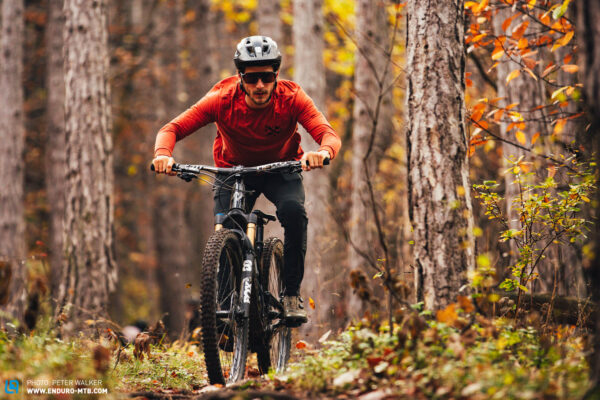
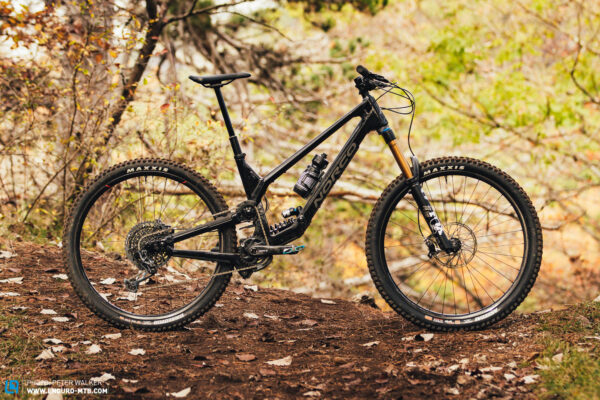
The SIMPLON Rapcon PMAX TQ 170/165 – Thighs like Nino!
With its discreetly integrated 50 Nm motor, the Rapcon PMAX TQ Light-eMTB delivers the ultimate Schurter effect. Although the motor provides assistance most efficiently at high pedalling cadences, the Rapcon PMAX TQ allows you to take it much easier on the climbs while at the same time letting you embark on longer rides – and even mixed outings with analogue friends aren’t a problem with this setup either! Downhill, the Rapcon PMAX feels extremely composed and balanced, reminding us a lot of its analogue brother, which secured victory in last year’s “Best Enduro Bike of 2022” group test.
